- An excellent all-rounder - efficient, practical, loaded with equipment
- More distinctive inside and out than before
- Intuitive and relatively efficient drivetrain
- Divisive exterior design
- Noticeably more expensive base model than before
- No more diesel powertrain globally
The Hyundai Santa Fe has – rightfully – earned a strong reputation in Australia as a quality seven-seat SUV that’s good value for money, practical, comfortable and easy to drive. For some, the Hyundai brand is pretty much only the Santa Fe, and it’s easy to see why. Rather than resting on its laurels, Hyundai has given the new Santa Fe a big glow up for its latest generation, dubbed the ‘MX5’ (that’s not a typo), with a massive styling change outside that gives off a decidedly rugged vibe. Is the 2024 Hyundai Santa Fe the seven-seat SUV to buy? Let’s find out by discovering both the entry- and top-spec variants.
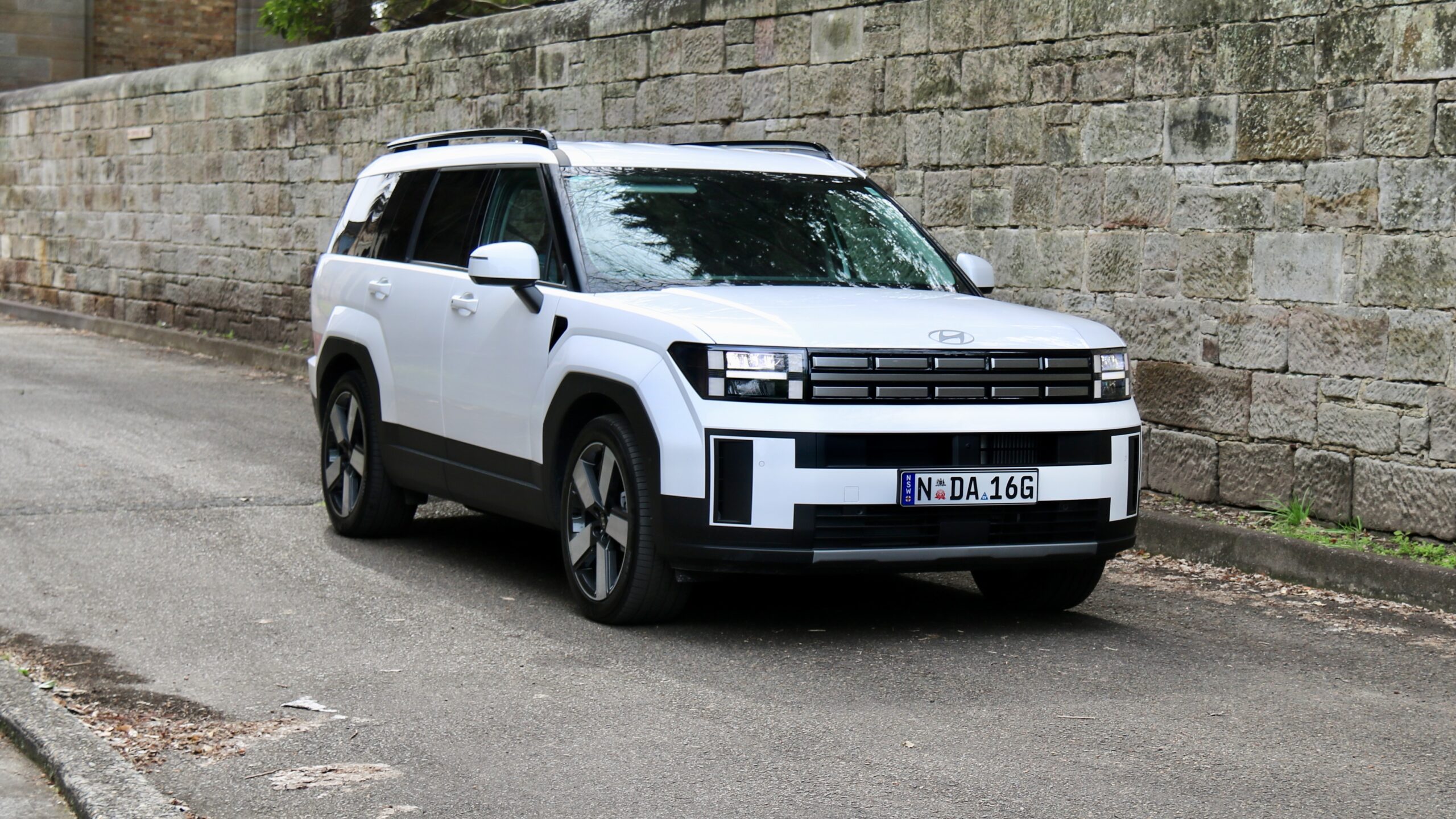
We can’t discuss the new Santa Fe without mentioning its new styling. The previous-generation Santa Fe was curvy and – still is – handsome. Hyundai clearly thought that it needed a change because the new model is boxier and more Land Rover in its look. That change has paid dividends in interior practicality, according to Hyundai, as the new model is now roomier than before without stepping on the toes of the larger Palisade. Has the ripping up of the traditional Santa Fe recipe paid off?
How much does the 2024 Hyundai Santa Fe cost to buy?
For now, there are three models in the Australian Santa Fe range: the entry-level Santa Fe (priced from $55,000 plus on-road costs or around $61,000 drive away, depending on location, for the front-drive model or $58,500 +ORC for the all-wheel drive car), mid-spec Elite ($65,000 +ORC or around $71,000 drive away) and top-spec Calligraphy ($75,000 +ORC or around $81,000 drive away).
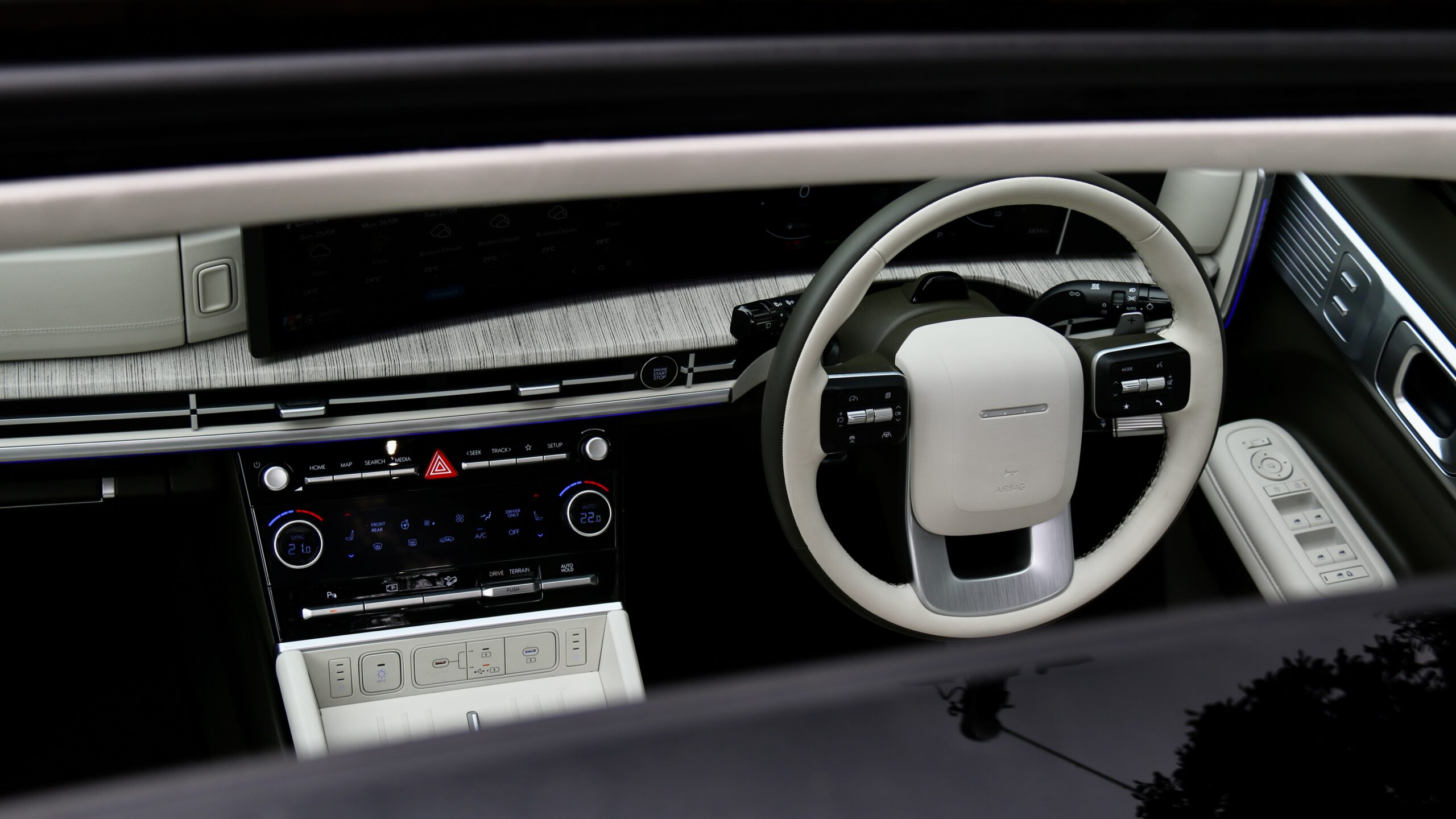
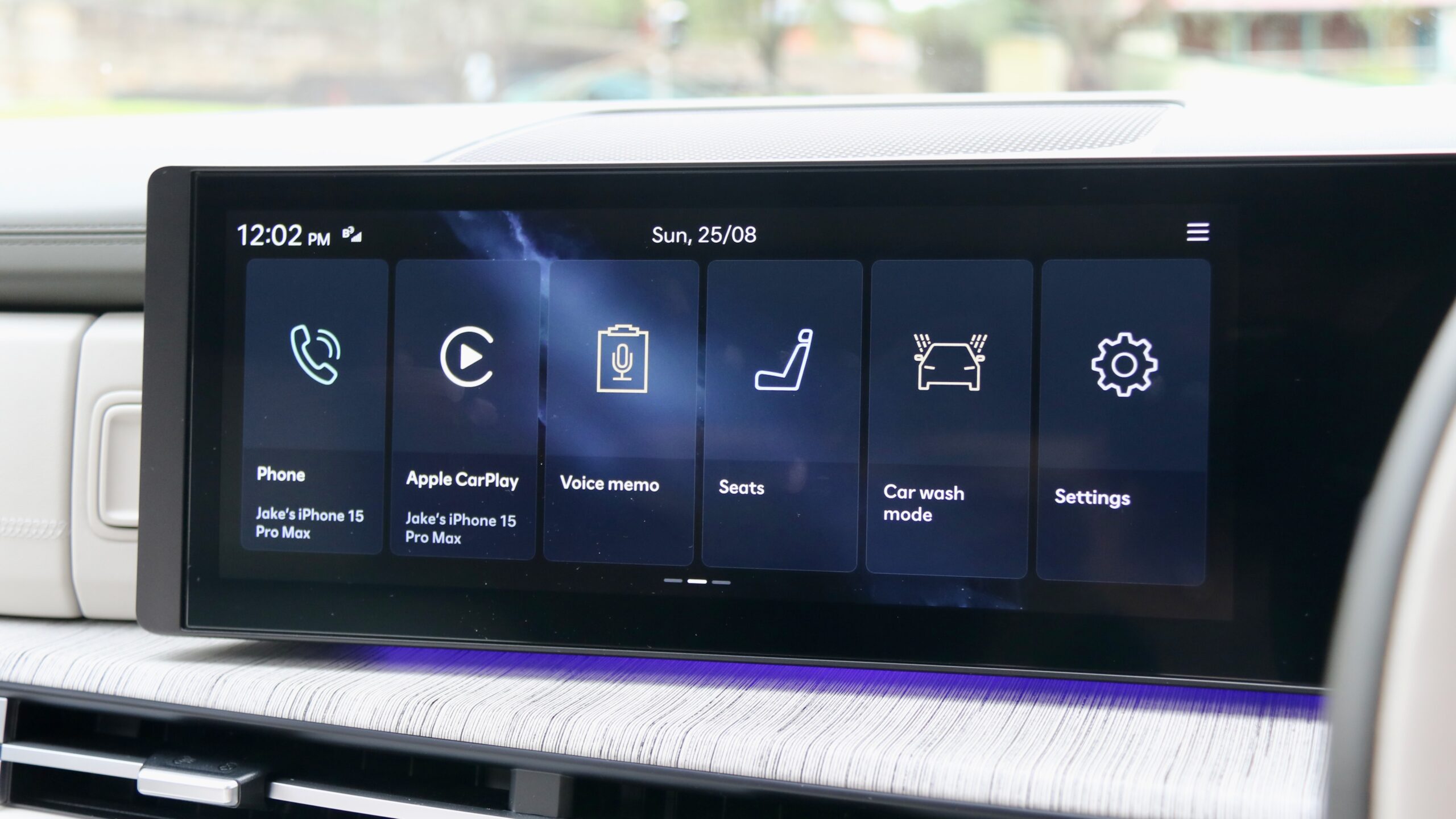
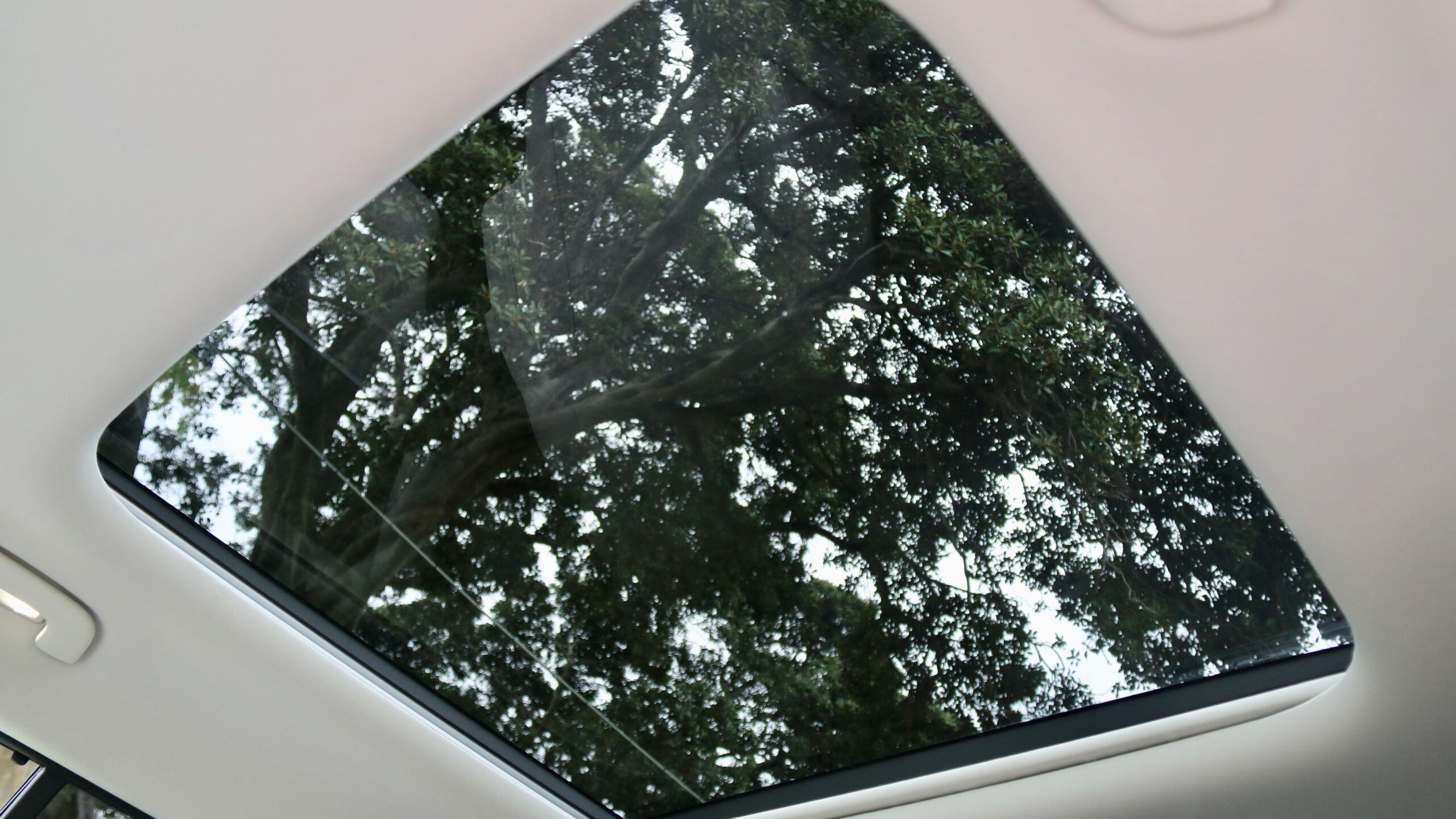
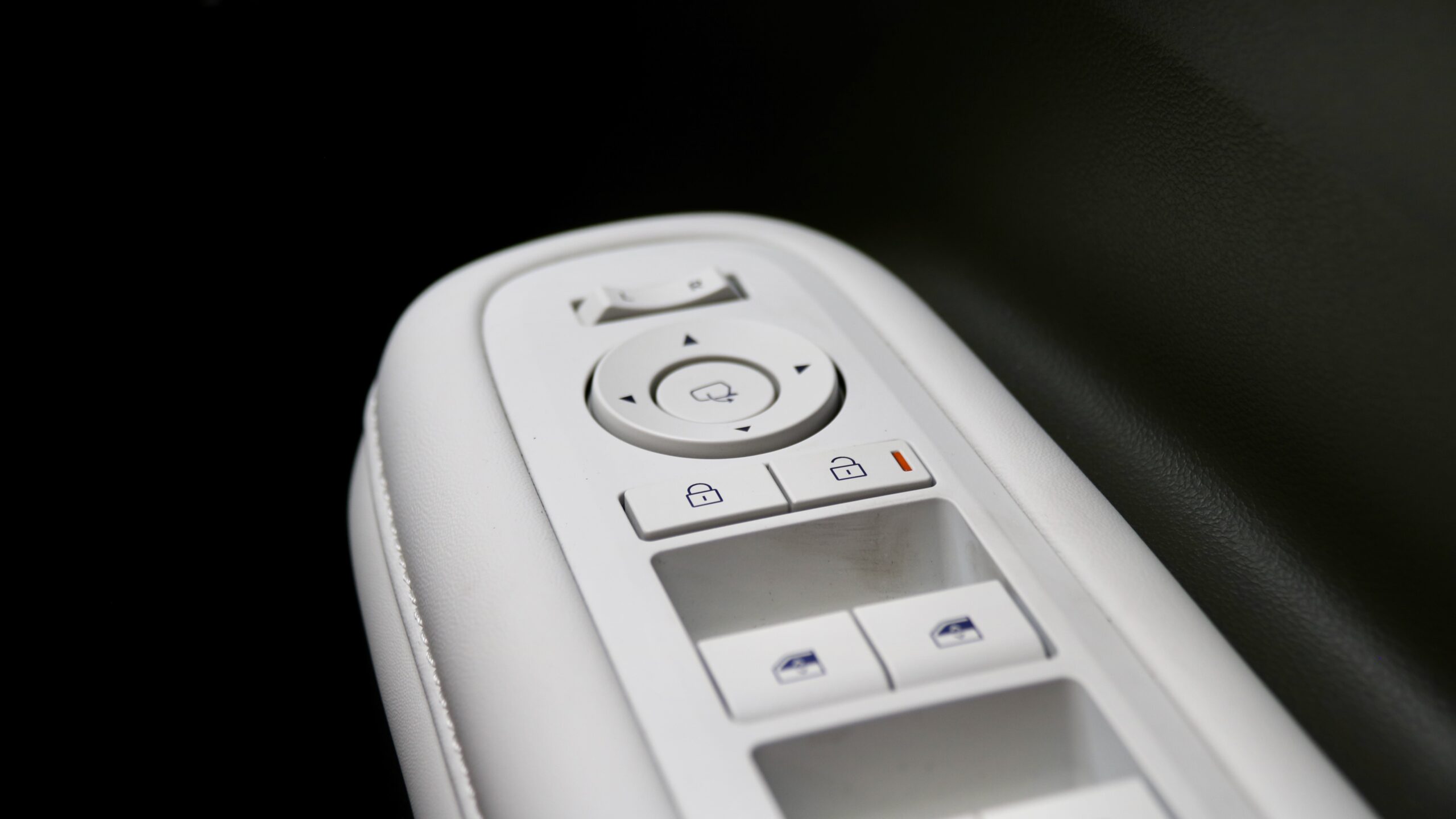
Santa Fe standard equipment:
- 20-inch alloy wheels with a full-size alloy spare
- Dusk-sensing automatic all-LED exterior lighting with front and rear daytime running lights
- Rain-sensing automatic wipers
- Roof rails
- Rear privacy glass
- Keyless entry and start with
- Power tailgate
- Leather-wrapped steering wheel with paddle shifters
- Black cloth upholstery
- 10-way electrically adjustable driver’s seat
- Heated front seats
- Dual-zone climate control with third row fan control
- 12.3-inch digital driver’s display
- 12.3-inch touchscreen
- Wireless Apple CarPlay and Android Auto smartphone mirroring
- AM/FM/DAB+ digital radio
- Six-speaker sound system
- Hyundai’s ‘Bluelink’ live services with over-the-air updates
- Wireless phone charger
- Three driving modes (eco, my drive and sport) plus three extra terrain modes for AWD models (snow, mud and sand)
Santa Fe safety equipment:
- 10 airbags (including a front centre unit)
- Auto emergency braking (AEB) with pedestrian, cyclist, intersection and steering assistance
- Lane keeping assistance with lane departure warning
- Adaptive cruise control with stop and go functionality
- Blind-spot monitoring with camera feed and braking
- Safe exit assist
- Auto high beam
- Driver attention monitoring
- Intelligent speed limit assist
- Rear-cross traffic alert (with braking)
- Rear occupant alert
- 360-degree camera
- Front and rear parking sensors
- Tyre pressure monitoring
- Low-speed rear auto emergency braking (AEB)
At the time of publishing, the Santa Fe range is yet to be tested by either Euro NCAP or ANCAP.

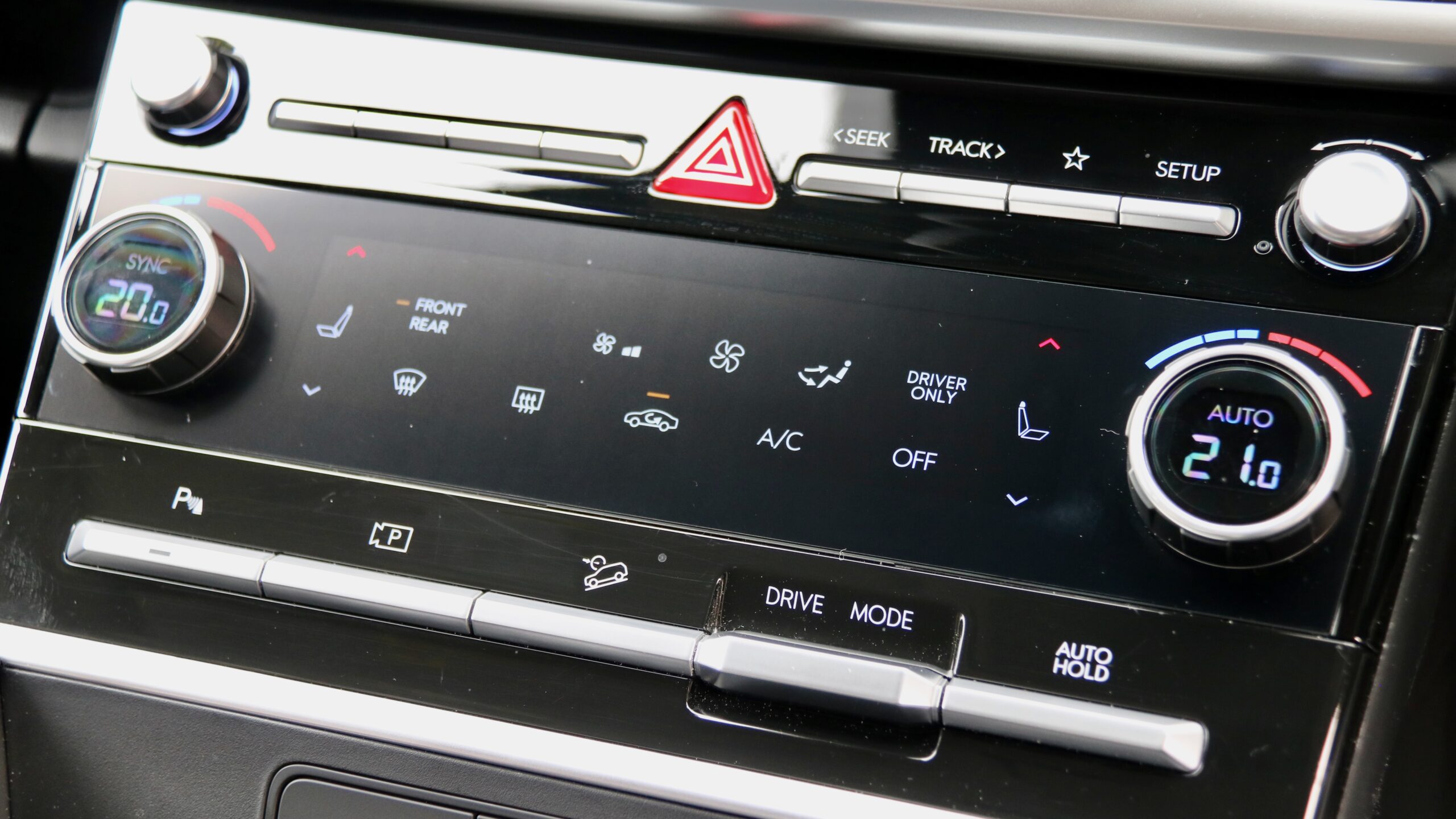
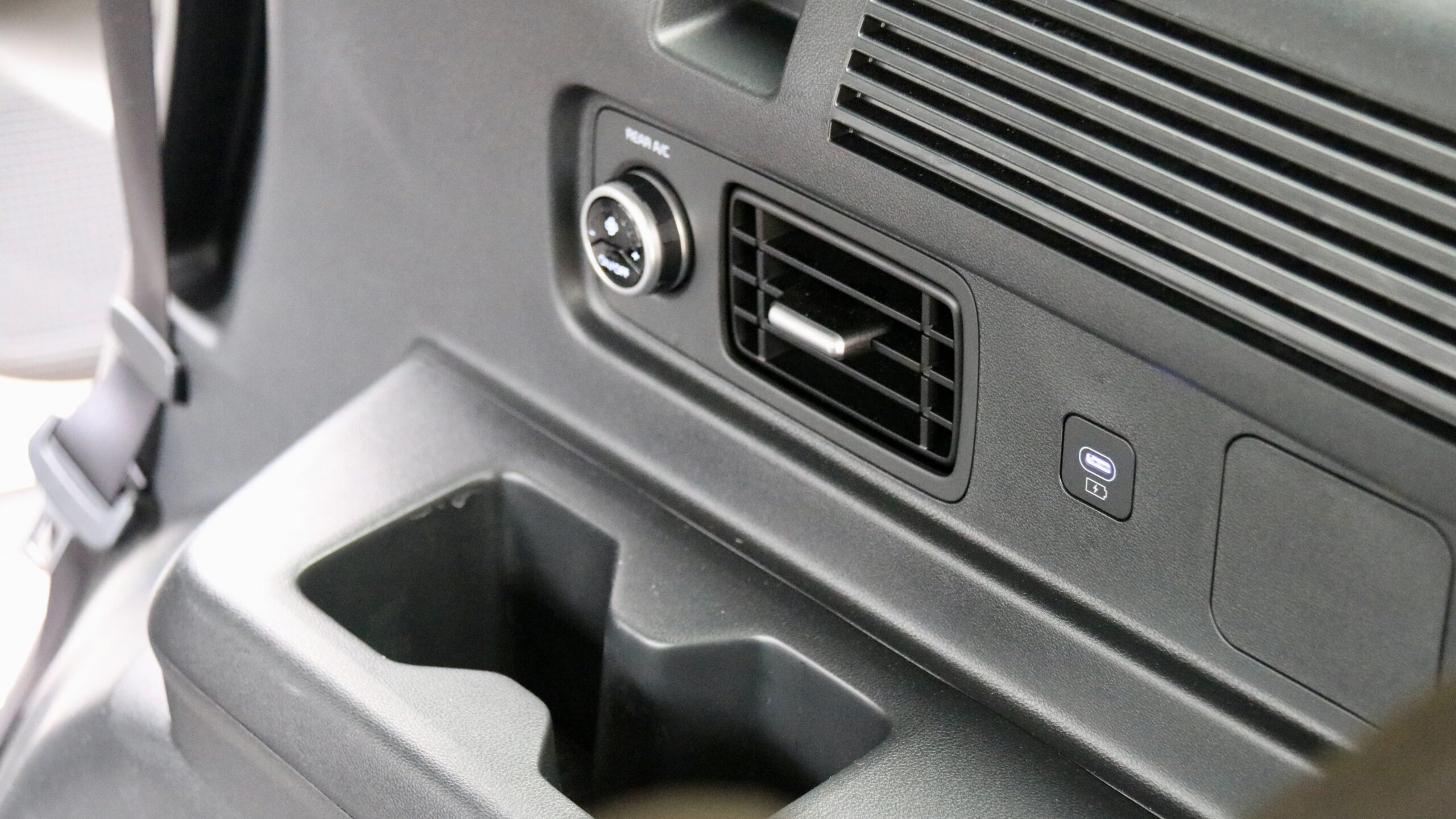

Santa Fe Elite adds:
- Satellite navigation with live traffic
- 12-speaker Bose sound system
- Leather seat upholstery
- Suede headliner
- Powered front passenger seat
- Heated steering wheel
- Second wireless phone charger in the centre console
- Acoustic front door glass
- Projector LED headlights
- Highway driving assistance
- Remote smart parking
- Navigation-based adaptive cruise control
Santa Fe Calligraphy adds:
- Black exterior detailing, including wheels, badging and body cladding
- C-pillar assist handle
- Dual sunroofs
- Nappa leather upholstery
- Two-tone steering wheel
- Digital rear mirror
- Memory for the driver’s seat
- Ventilated front seats, heated outboard middle row seats
- Head-up display
- UV-C sanitising tray
- Relaxation settings for the front seats
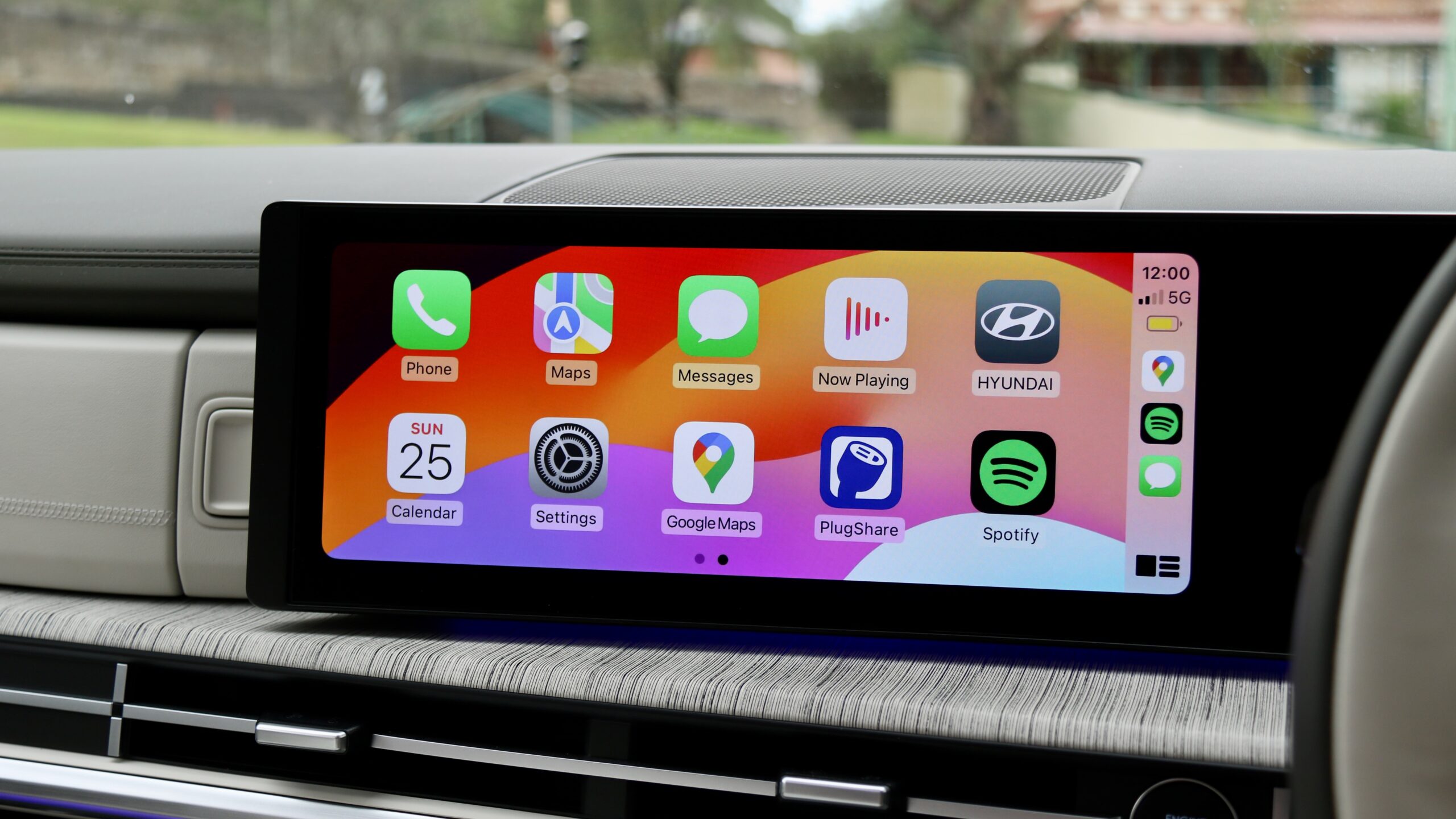
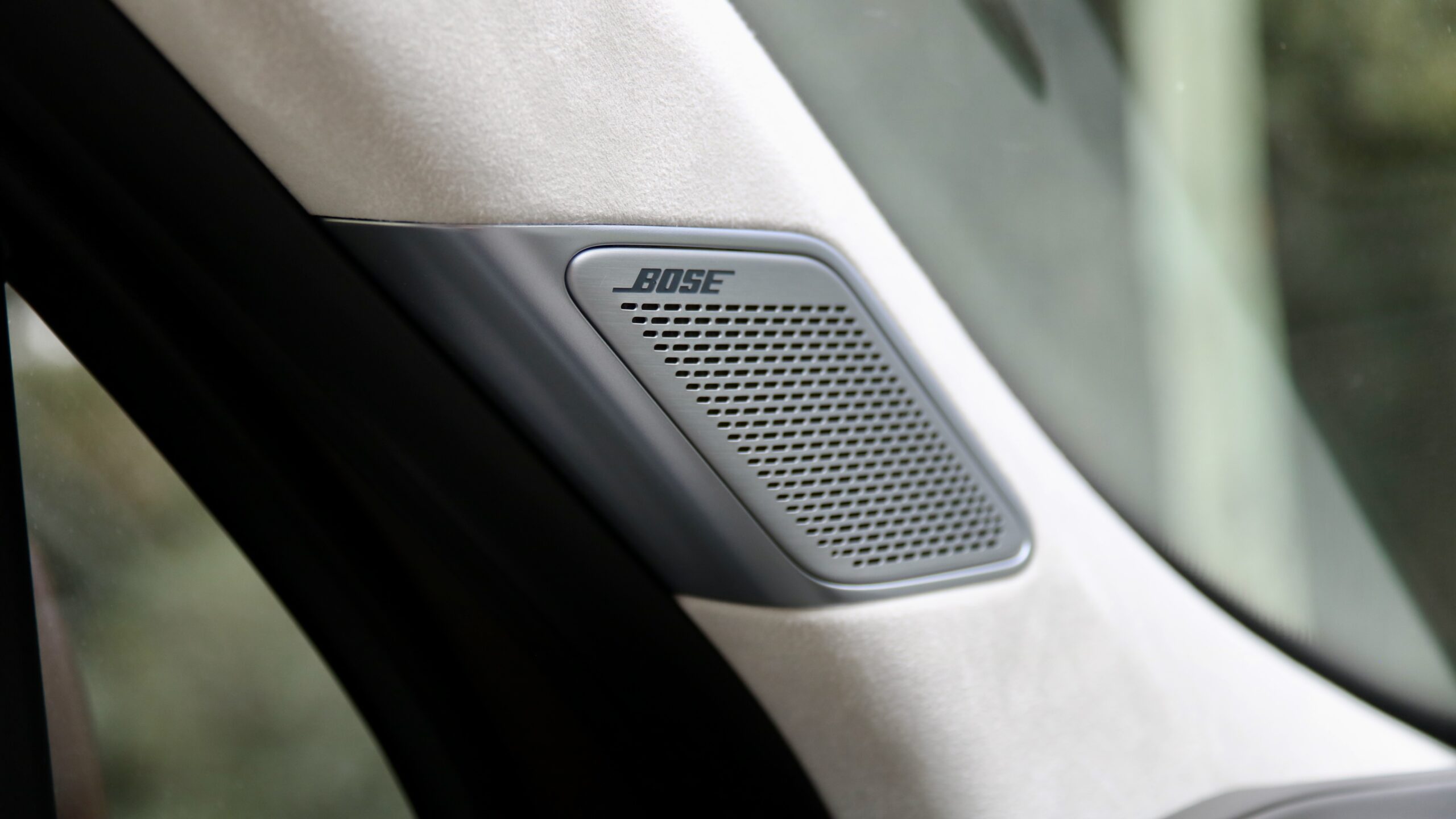
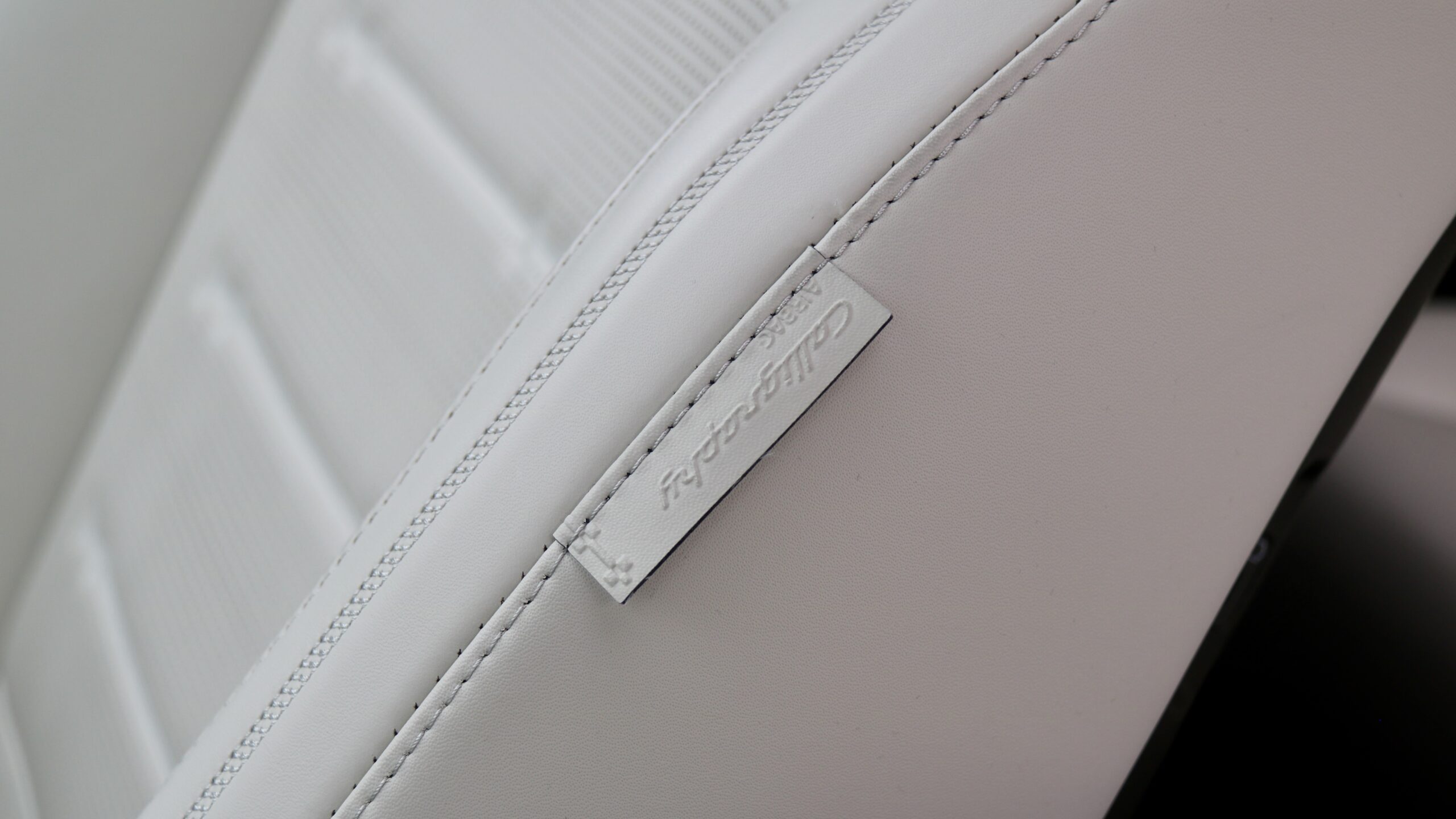

Santa Fe colour range:
- Creamy White (fitted to our base model test car)
- Terracotta Orange
- Ocado Green: $695
- Pebble Blue: $695
- Typhoon Silver: $695
- Magnetic Force: $695
- Cyber Sage: $695
- Abyss Black: $695
- Earthly Bronze matte (Calligraphy only): $1,000 (fitted to our Calligraphy test car)
- Creamy White Matte (Calligraphy only): $1,000
Santa Fe options:
- Six-seat layout (Calligraphy only): $500
- Premium paint: $695
- Matte paint: $1,000
- Grey (Elite only) or green or brown (Calligraphy only) interior: $295
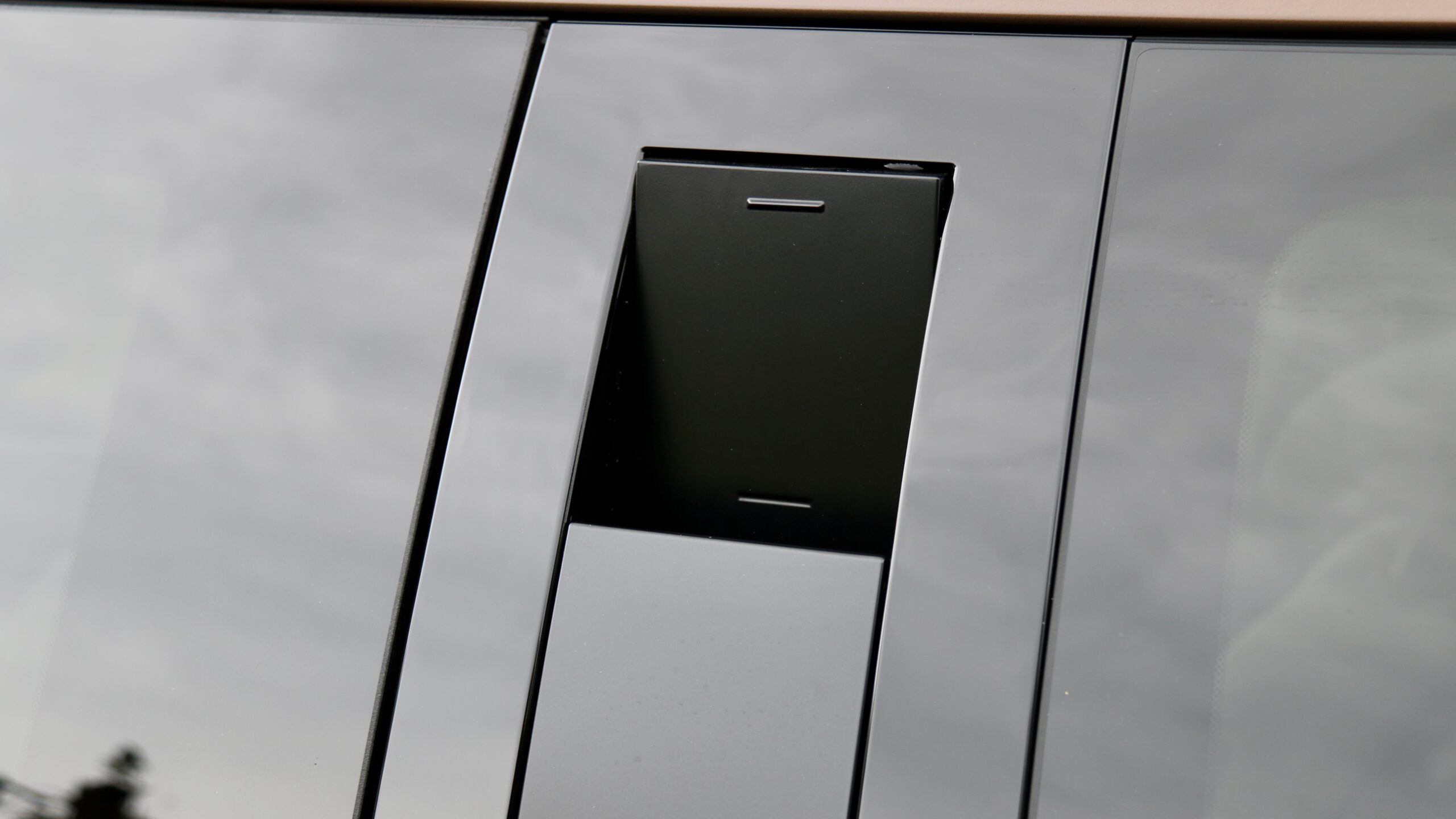
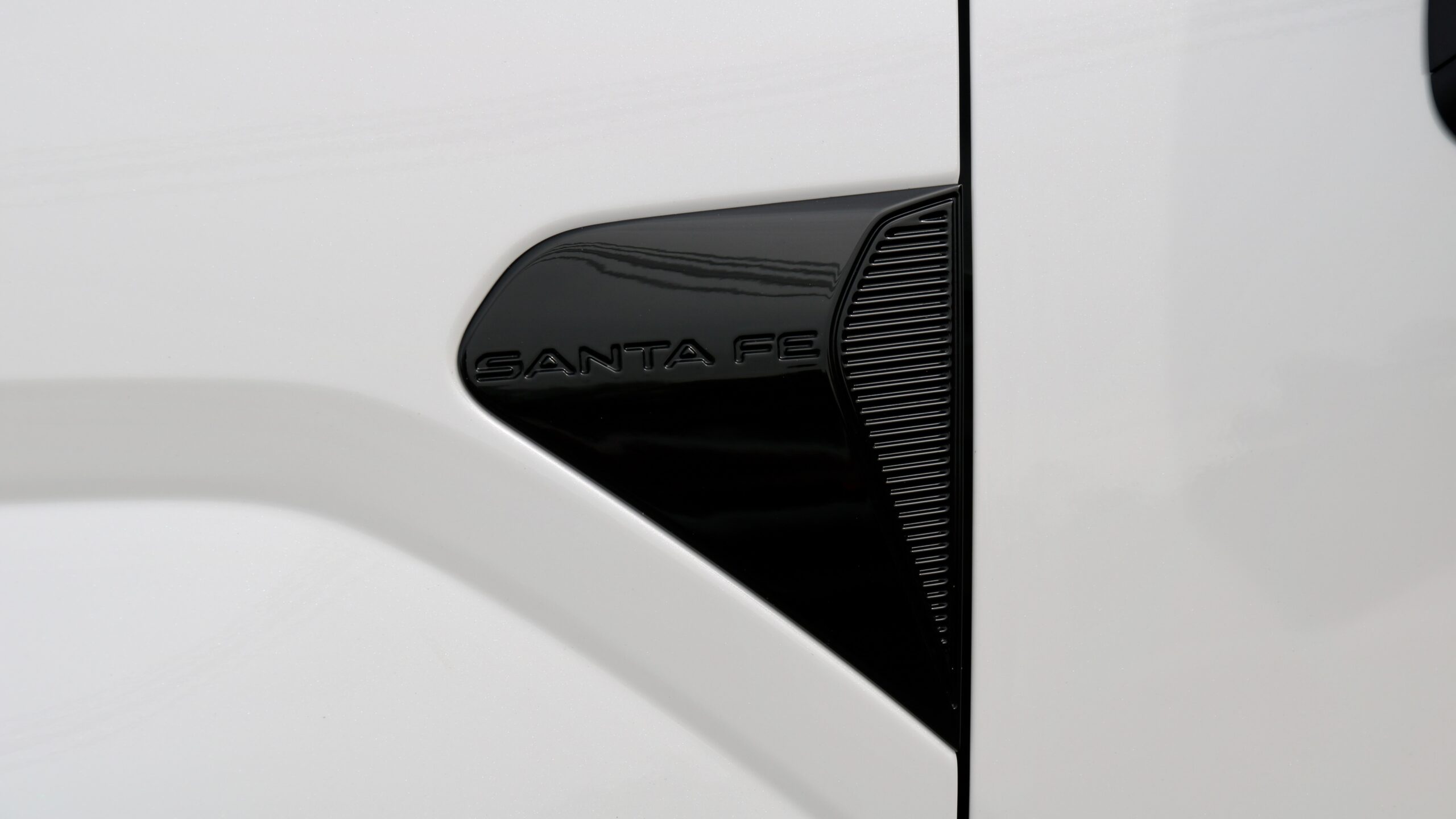
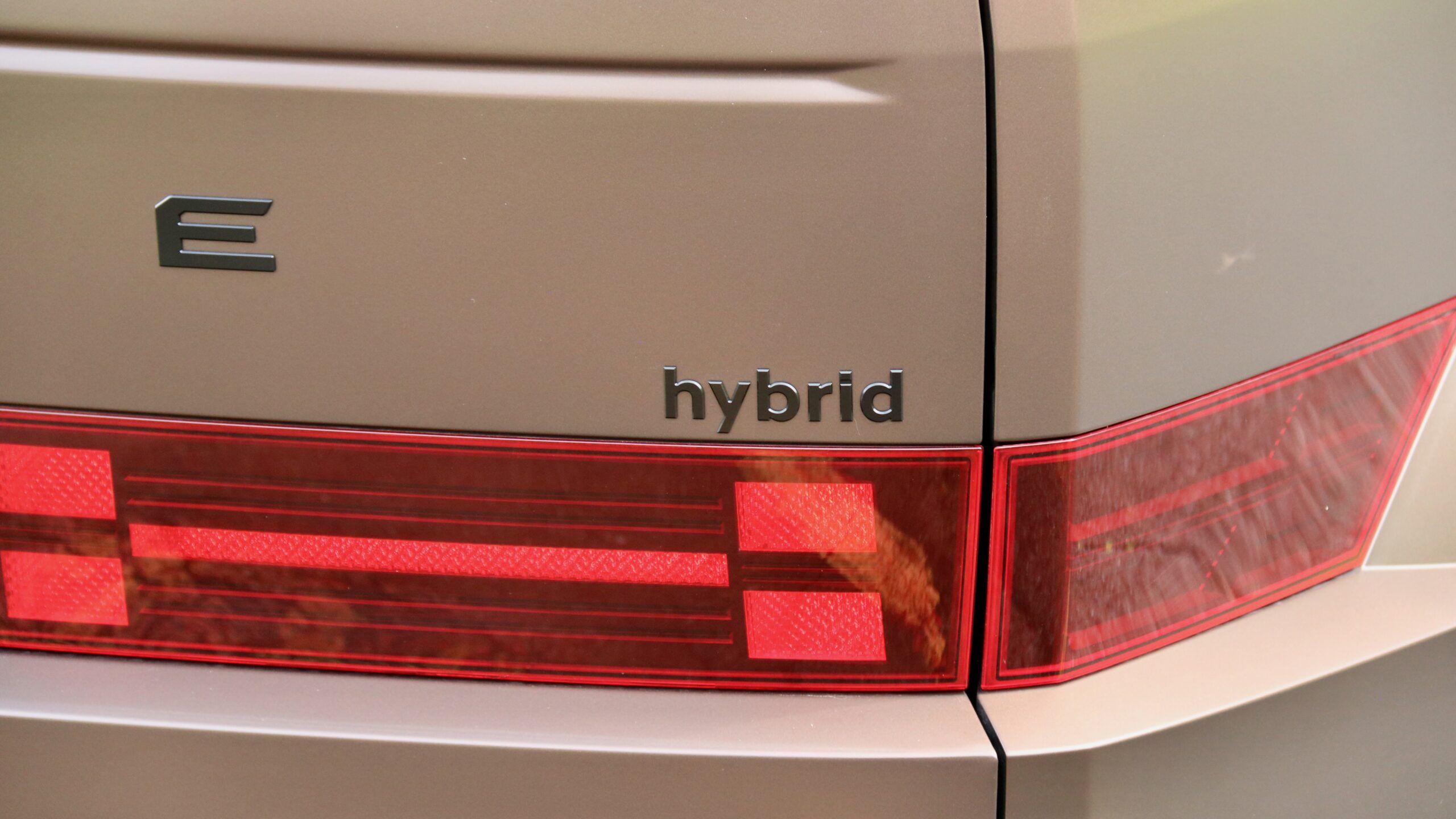
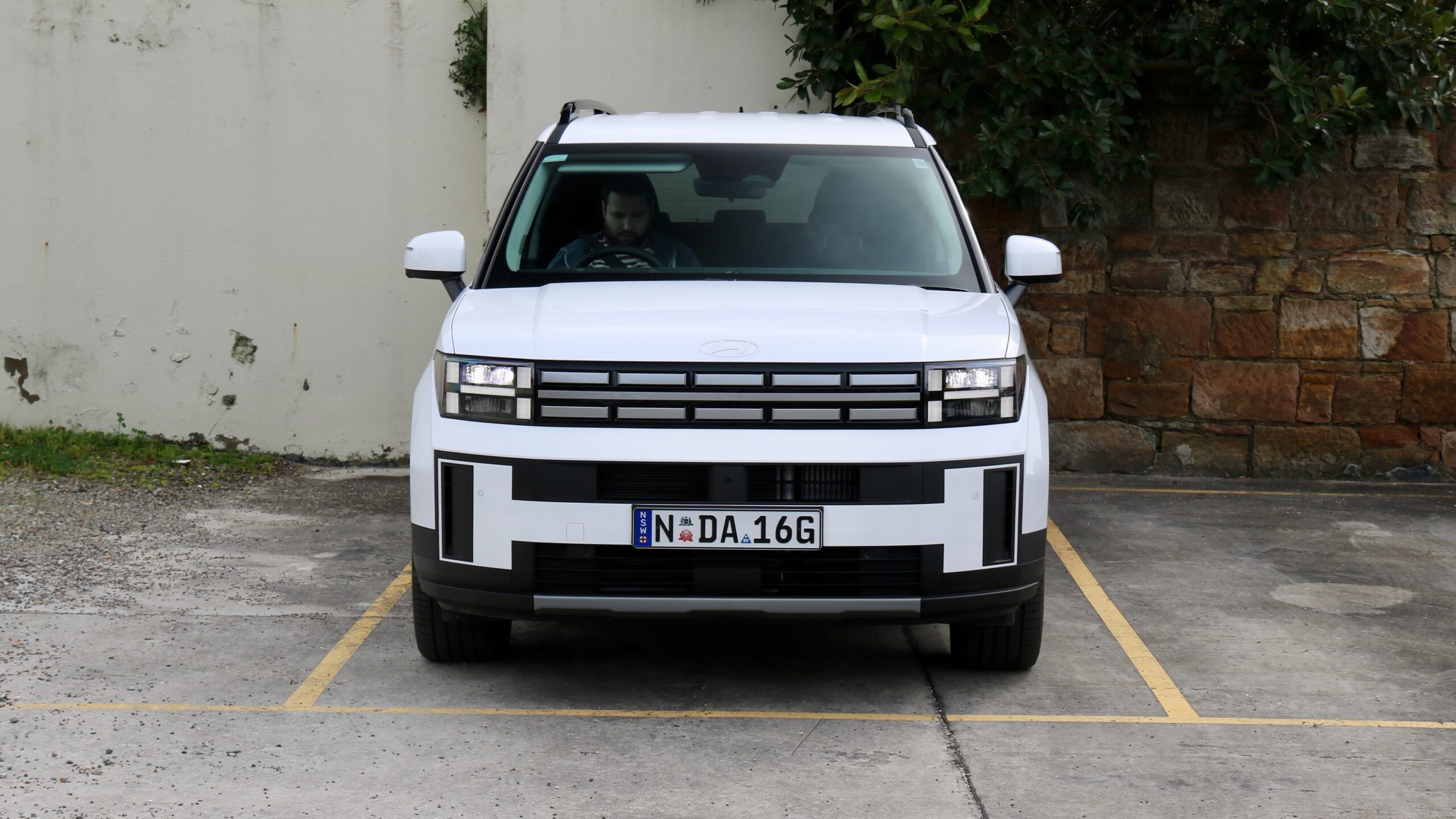
Competing in the large six/seven-seat SUV segment, the Santa Fe is not short of competition and we think that the Toyota Kluger – which is also now hybrid-only – is the Santa Fe’s main competitor. Competing against the base Santa Fe is the Kluger GX (around $66,500 drive away) and against the Santa Fe Calligraphy is the Kluger Grande (around $90,000 drive away) and while it’s a lengthy process to ascertain specific equipment differences between each spec, the Santa Fe is undoubtedly better value for money than the Kluger thanks to its longer equipment list and lower asking price in each specification.
How fuel efficient is the 2024 Hyundai Santa Fe?
Under the bonnet of the 2024 Hyundai Santa Fe is a 1.6-litre turbocharged four-cylinder petrol engine combined with an electric motor for combined outputs of 172kW of power and 367Nm of torque. The electric motor draws power from a 1.49kWh lithium-ion battery, while power is sent to the wheels via a six-speed automatic transmission. All models are all-wheel drive, but the base model can also be had in front-wheel drive form. By comparison, the Kluger uses a naturally aspirated 184 kW 2.5-litre four-cylinder hybrid drivetrain mated to an e-CVT transmission, which features all-wheel drive as standard in Australia.
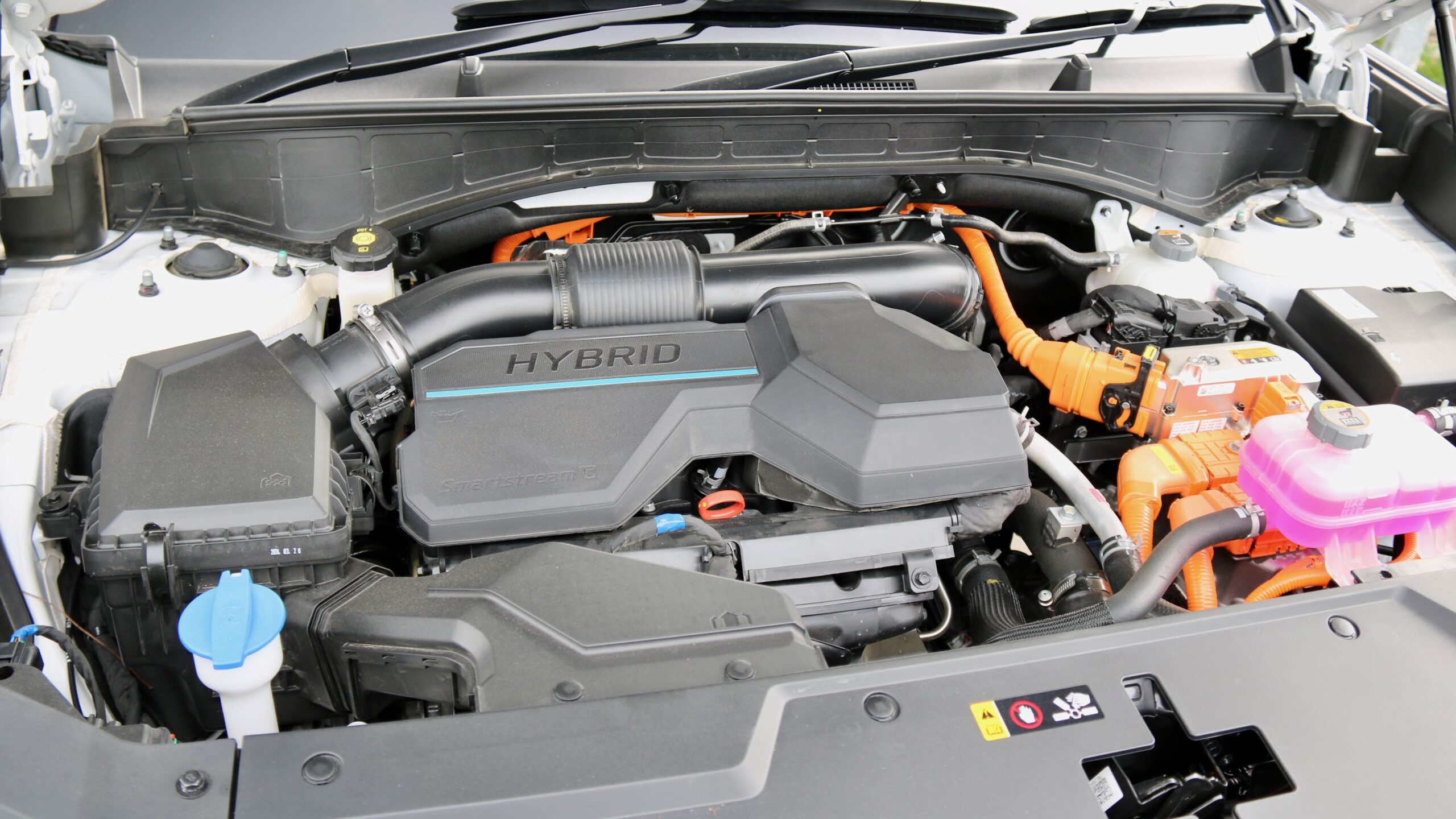
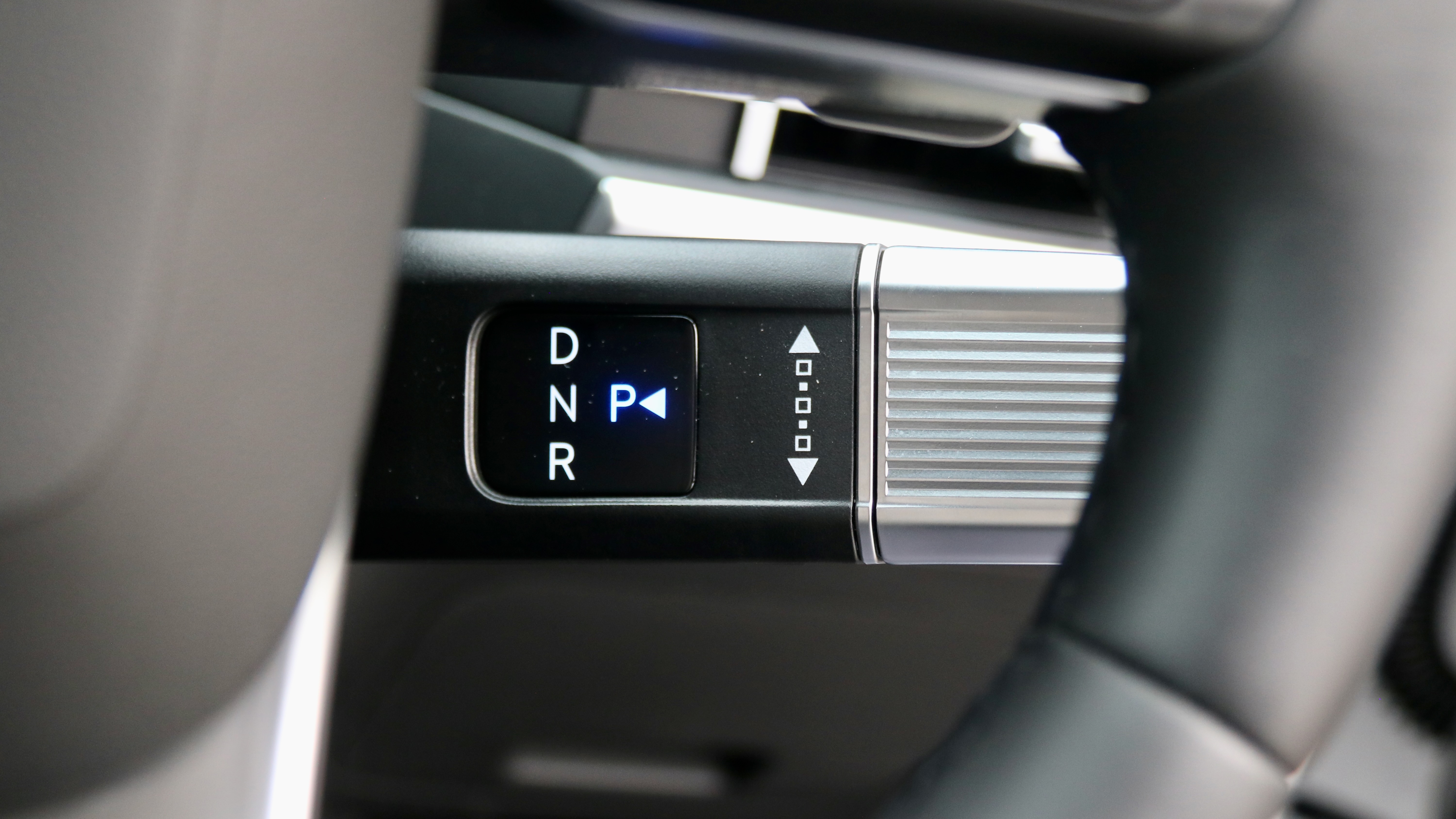
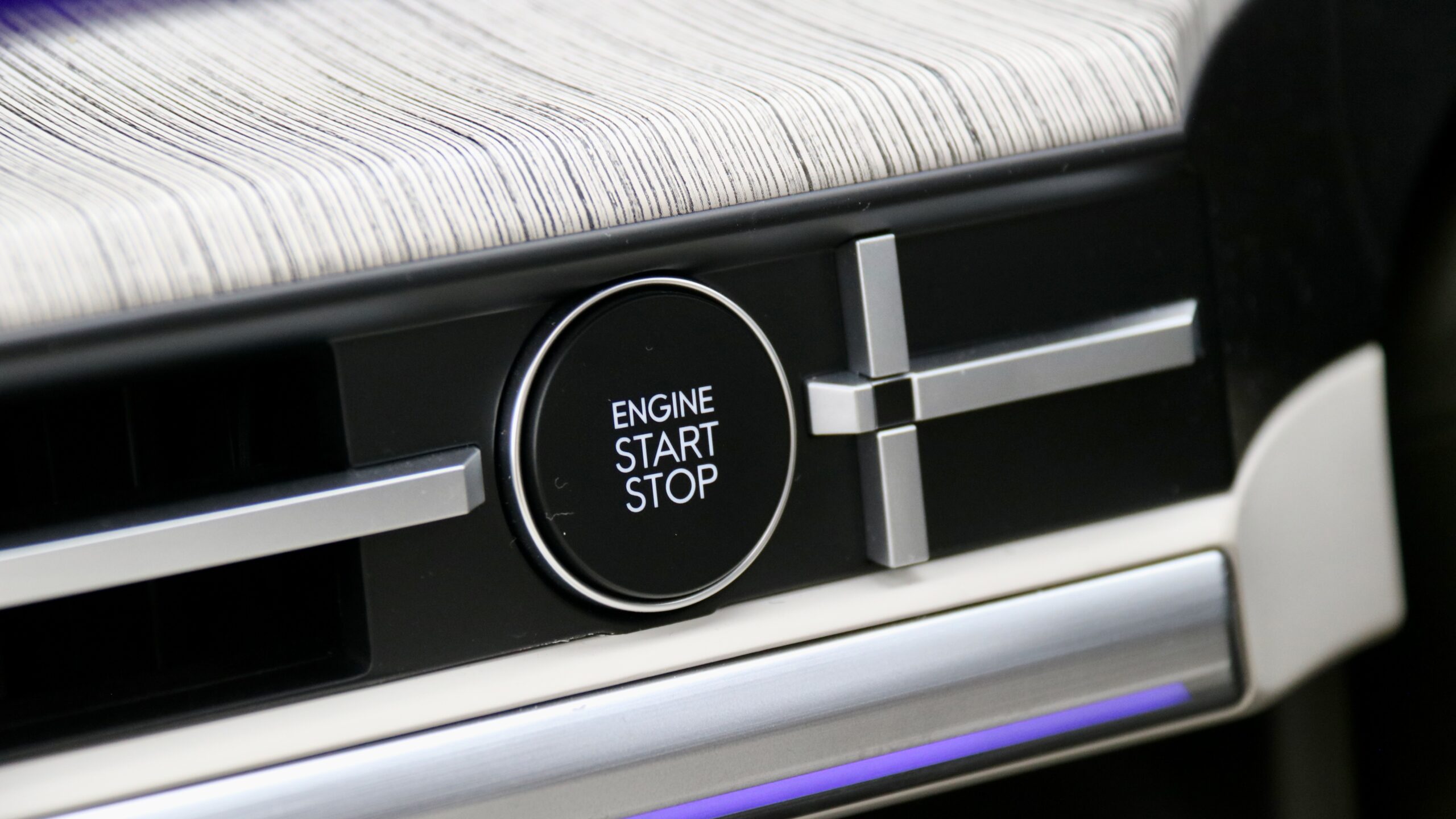
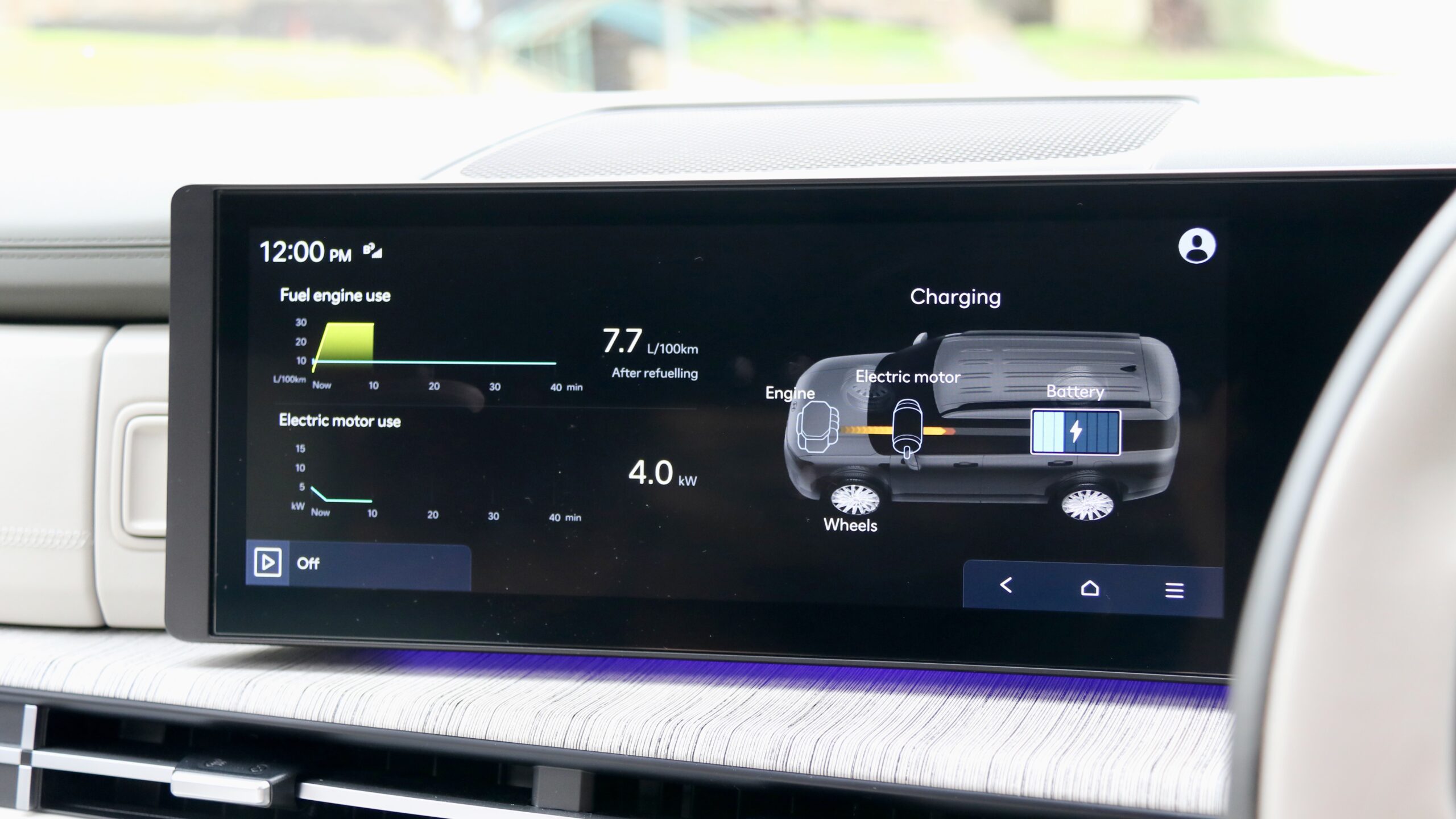
The Santa Fe range is rated at 5.6L/100km for combined fuel consumption, with claimed CO2 emissions of 128g/km – the Kluger is also rated at 5.6L/100km. Every Santa Fe has a 67-litre fuel tank and can run on 91RON regular unleaded fuel, while the Kluger needs minimum 95RON premium unleaded. We tested both the entry-level Santa Fe 2WD (the white car in our pictures) and Calligraphy six-seat (matte brown) and achieved fuel consumption in varied driving of 7.5L/100km without really trying, which is off the claim and more than we’ve achieved testing of various Kluger hybrids, but still reasonable for a big seven-seat SUV.
What is the 2024 Hyundai Santa Fe like to drive?
Based on Hyundai-Kia’s ‘N3’ platform that also underpins cars like the Tucson and the Kia Sorento, the new-generation Santa Fe drives exactly like you’d expect a modern Hyundai product to: it’s comfortable, refined and good to drive. The suspension soaks up bumps well and despite the large 20-inch wheels that are standard across the range and a lack of adaptive dampers, the ride is nicely damped. The body control is a touch soft, but the handling can be fun and it’s overall satisfying to drive. It’s a bit firmer than a Kluger, though it handles a touch better as well. The Santa Fe’s road noise levels are nicely hushed too.
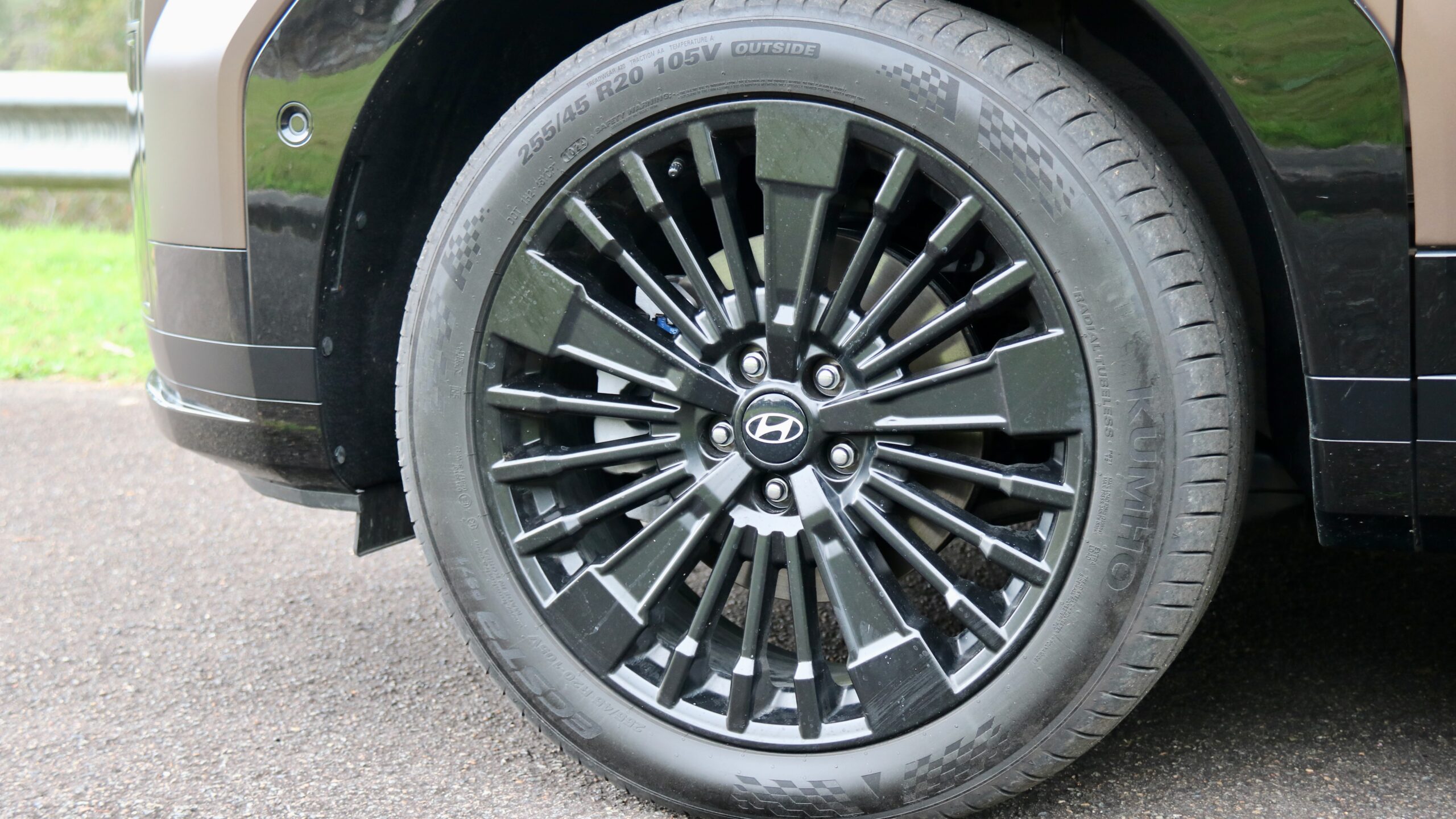

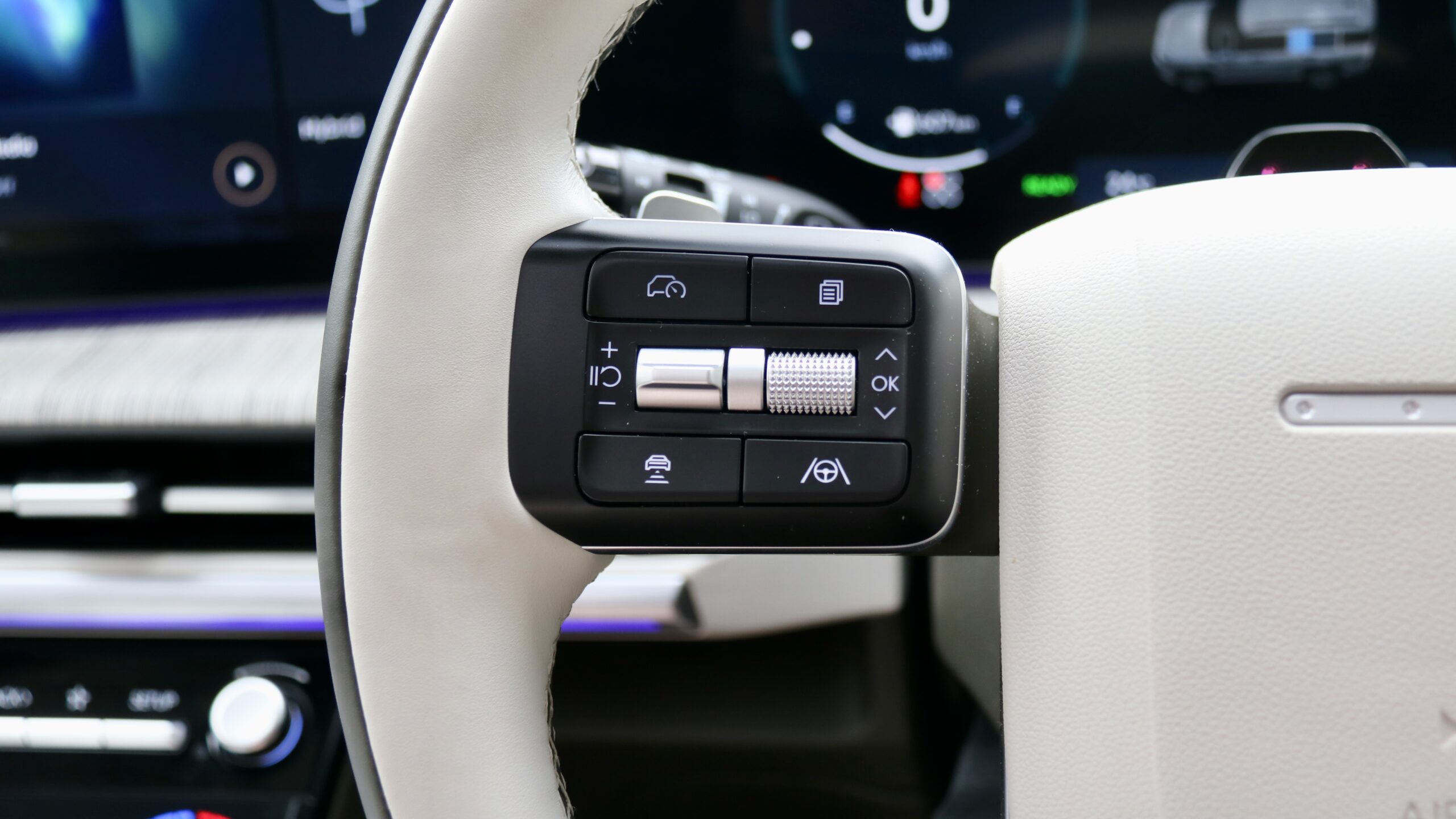
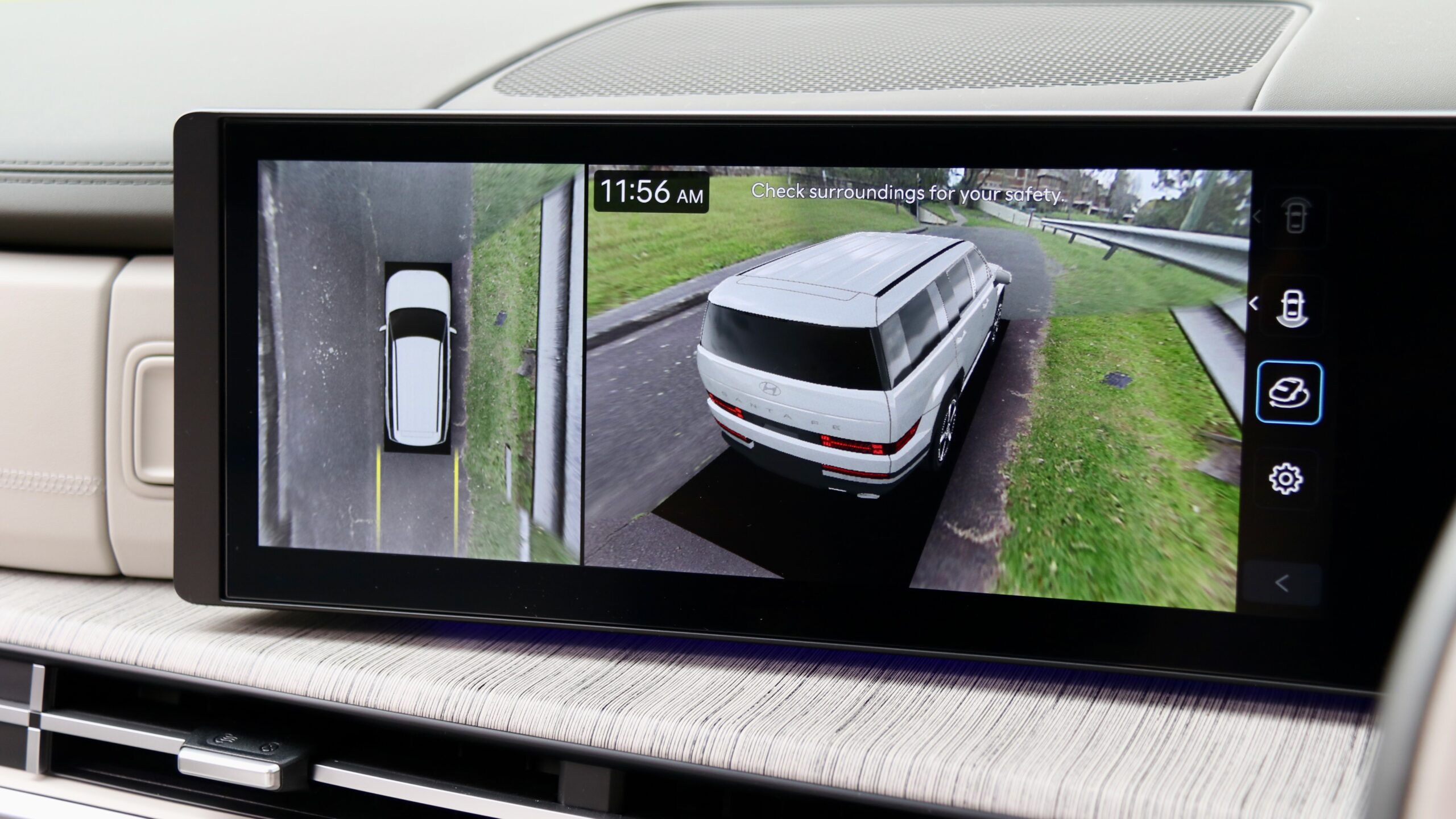
The hybrid drivetrain is also used in cars like the Tucson and Sorento, and as we’ve seen previously, it’s not as efficient as a Toyota hybrid system, but it’s more natural-feeling for the driver. Keen drivers will appreciate that it has a proper transmission that doesn’t flare the revs and give a rubber band-like effect under hard acceleration like a CVT-equipped Toyota does. The Hyundai’s hybrid system is generally quite smooth and refined, and we quite like it.
The only transmission option is a six-speed automatic, which is generally seamless and smooth in our experience. What also helps the transmission is the low speed torque from the electric motor, which is available from 0rpm – if you’re wondering, the Santa Fe is capable of low-speed pure-electric driving like a Toyota hybrid, though anything more than reasonable prods of the accelerator have the petrol engine kicking in. Speaking of which, the drivetrain is reasonably punchy and sounds good as well.
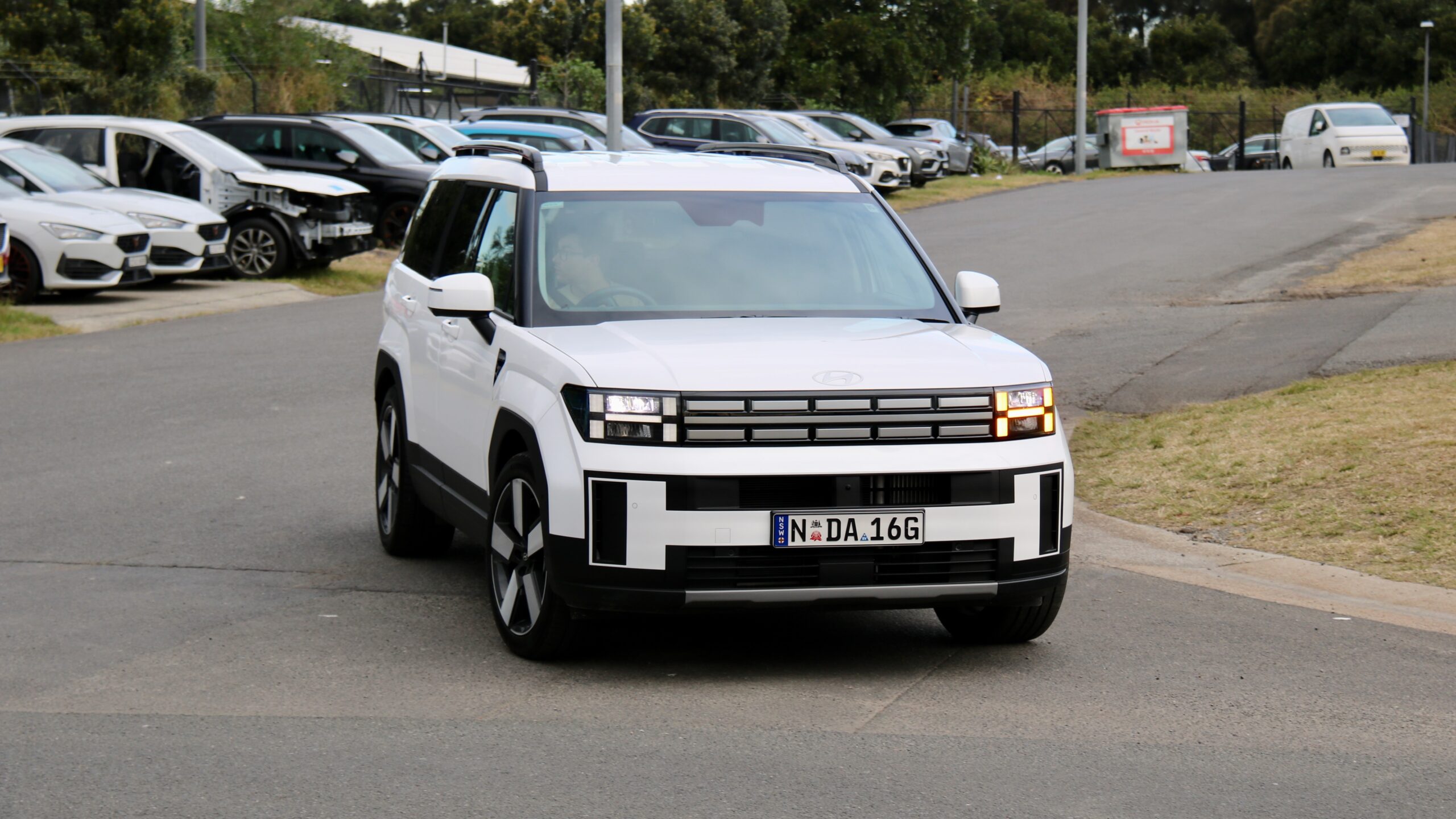
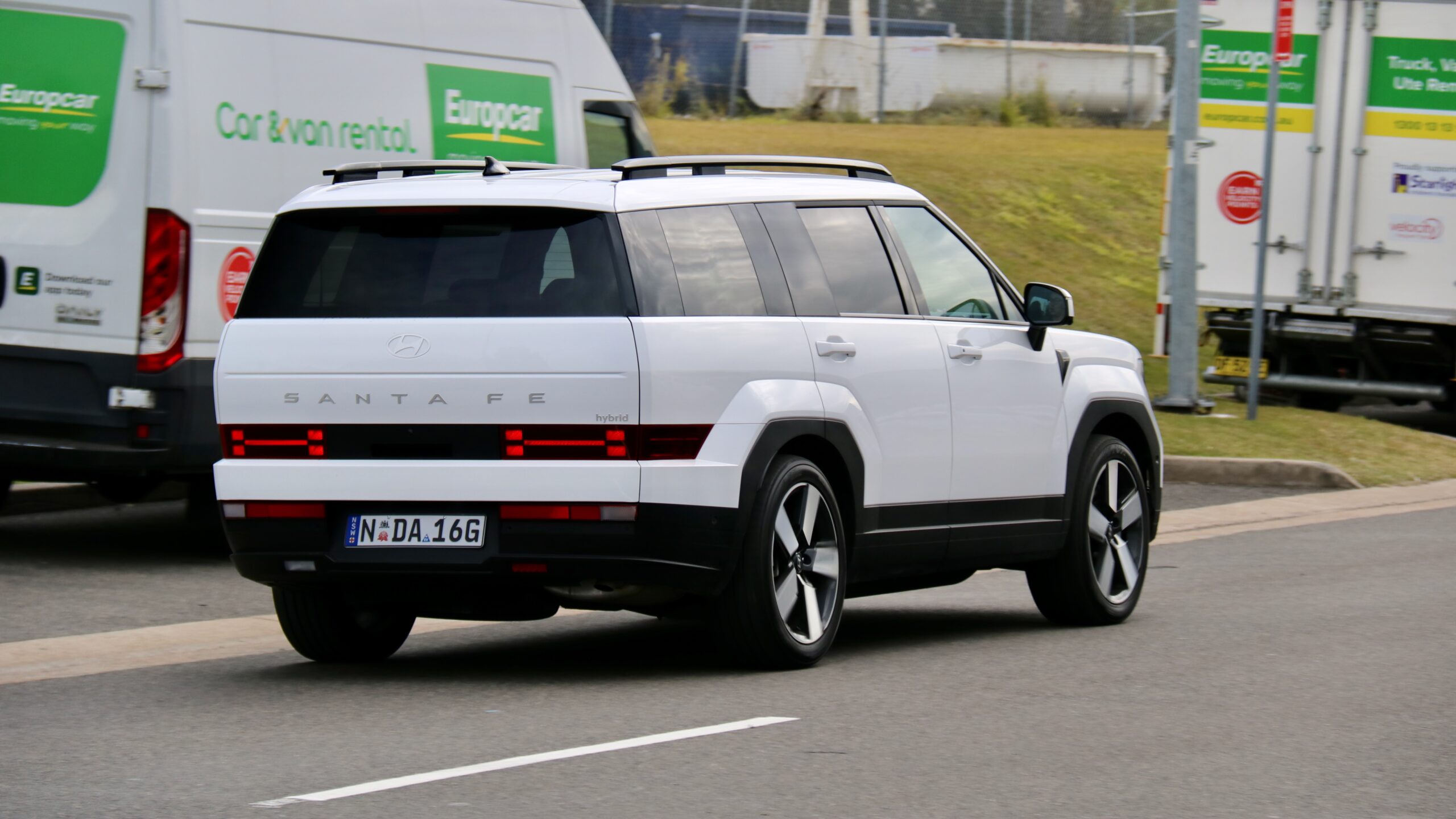
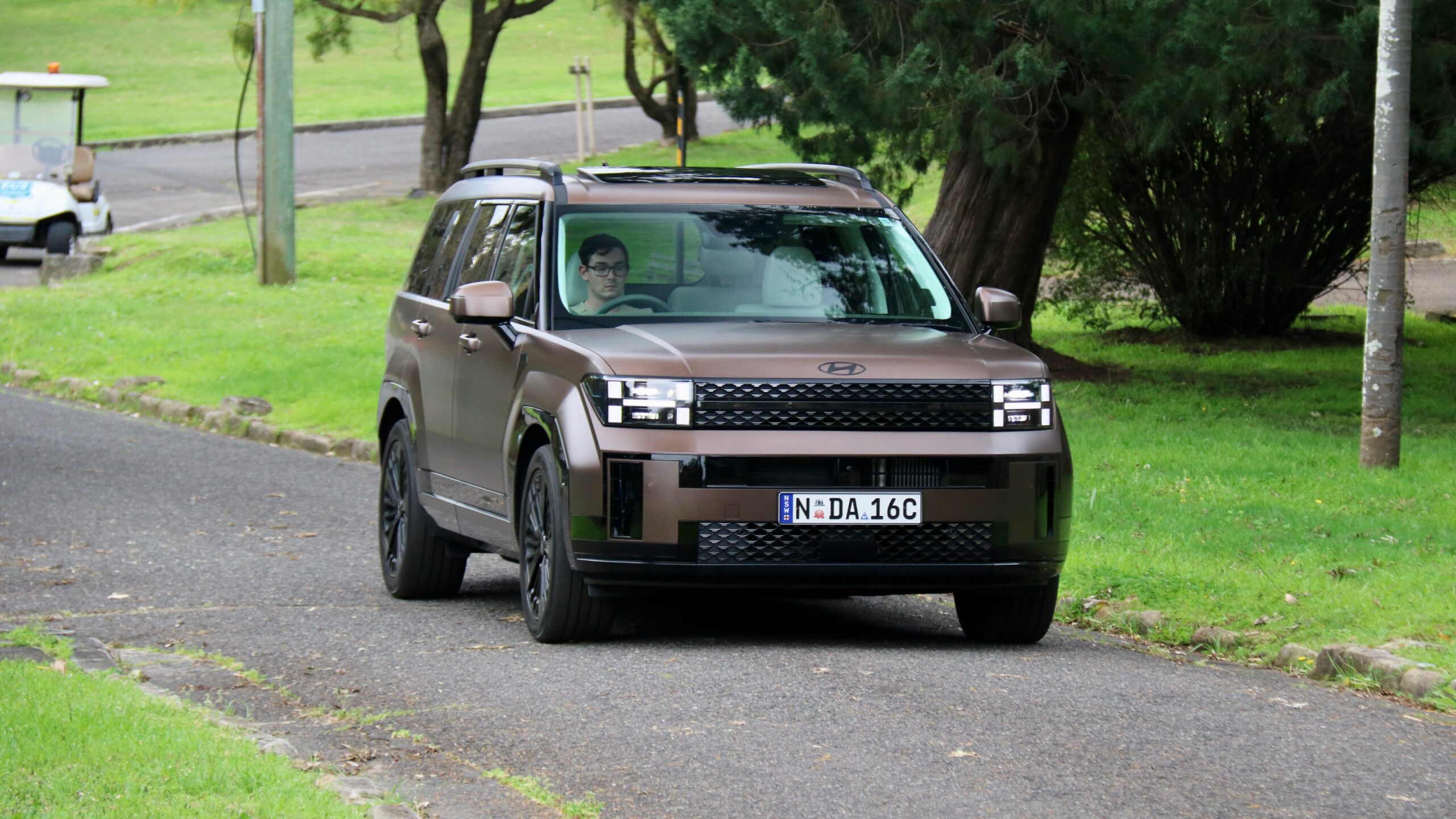
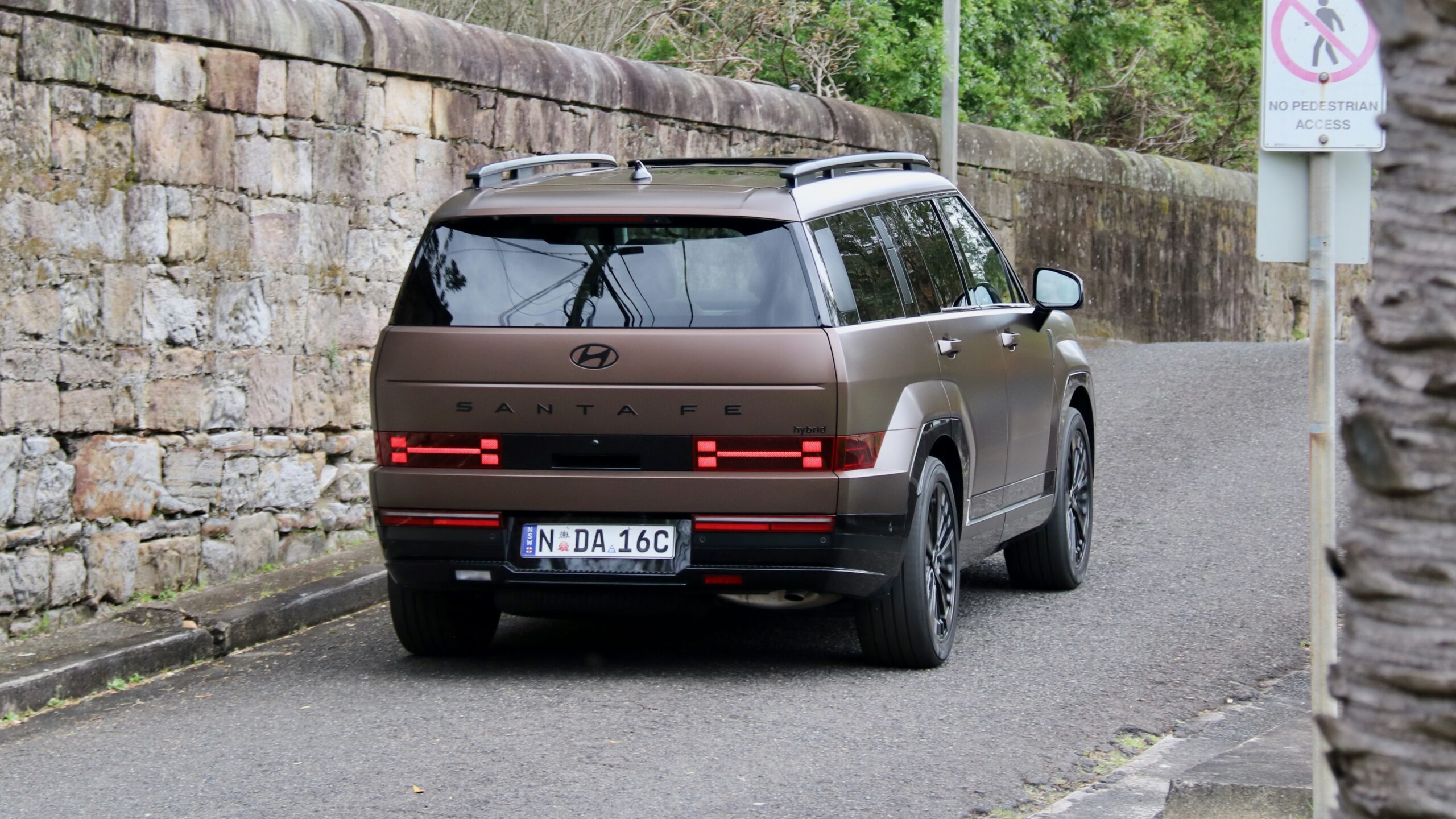
The active safety systems in the Santa Fe, as you’d expect for a current Hyundai product, are mostly excellent. Regardless of the model chosen, the list of safety features is long and wants for much – we’d like to see Matrix adaptive high beam but that’s it. The lane keeping assistance in particular is attentive, while the adaptive cruise control also works well. But as we’ve seen with other recent Hyundai products, the speed limit assistance technology needs refining because it detects the incorrect speed, and the alert is too loud as well. There is a [partial] fix coming to mute the system, but it will still need to pressed every drive. It’s not just Hyundai fitting these systems to its new products – you can thank automotive safety legislation for that – but we wish it was easier for them to be defeated.
How practical is the 2024 Hyundai Santa Fe?
Like the exterior, the interior of the 2024 Hyundai Santa Fe has seen a big change. There was nothing wrong with the old model’s interior but the new model takes that up a notch with an almost-premium, well-designed and more practical interior that would have us questioning spending a lot more money on products from more premium brands. The quality across the new Santa Fe range is pretty good, with ample use of soft touch materials and solid feeling switchgear. As you’d expect for the extra spend, the Calligraphy adds to that quality feel with its Nappa leather trim, but those unable to afford the jump up to the Calligraphy shouldn’t feel shortchanged. It certainly feels more modern and more practical than the interior in the Kluger.
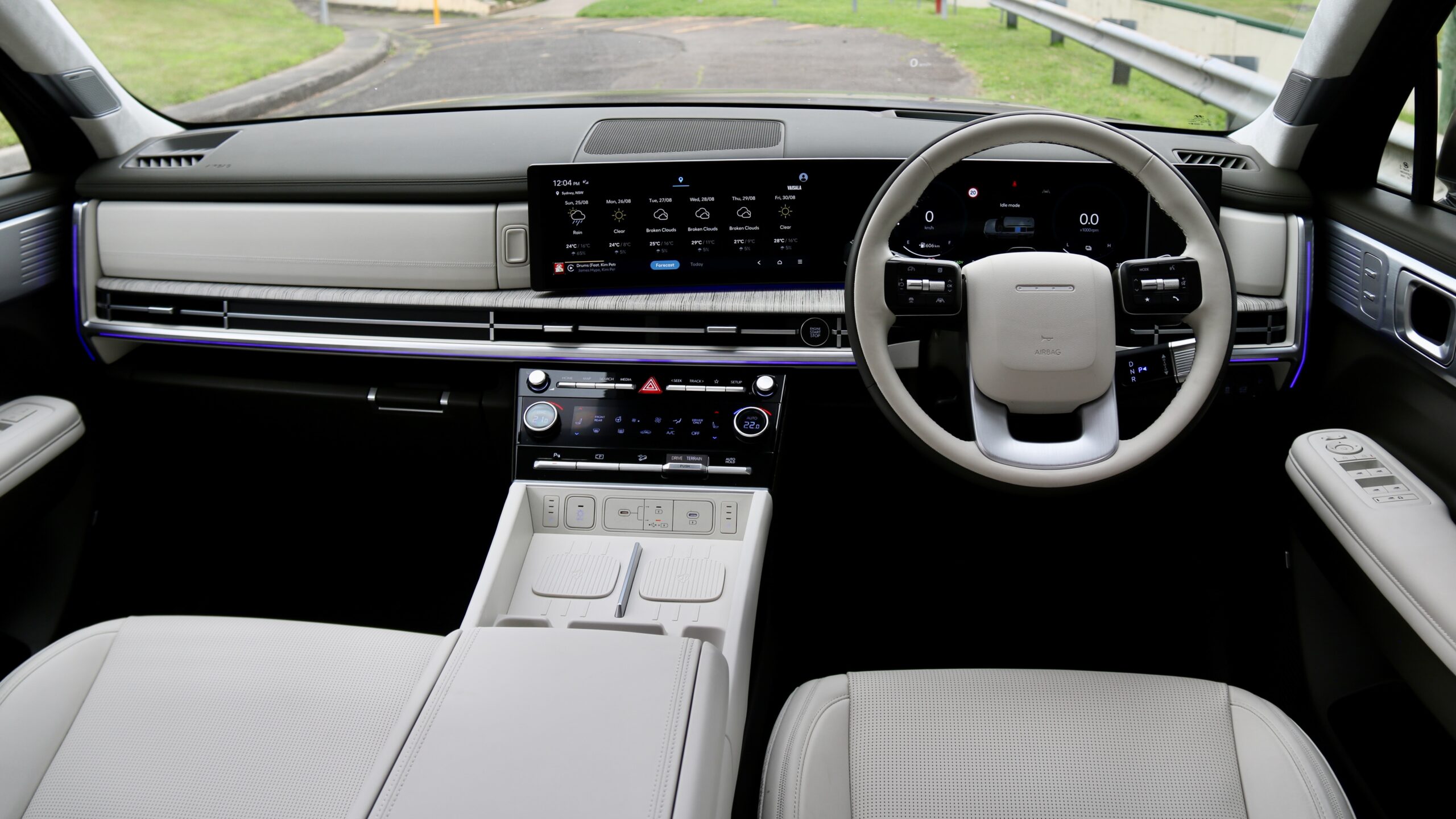
Practicality in the new Santa Fe is just excellent, and we struggle to think of another family SUV with as much storage space. The centre console is a massive open tray with big cup holders and a wireless charger (or two in the Elite and Calligraphy), while the bin underneath the centre armrest is massive and can also be opened from the rear.
The door bins are also large, while both gloveboxes also have ample space and even a UV steriliser in the Calligraphy. Finally, there’s a big tray underneath the centre console, which is great for food containers to not spill on the journey home from the take away shop. Seat comfort is excellent and the seats are quite adjustable – even the entry-level model impressively features 10 ways of electric adjustment and heating. We also love the business class-style under-leg portions of the seats, which give a lounge chair vibe to the Santa Fe Calligraphy’s cabin.
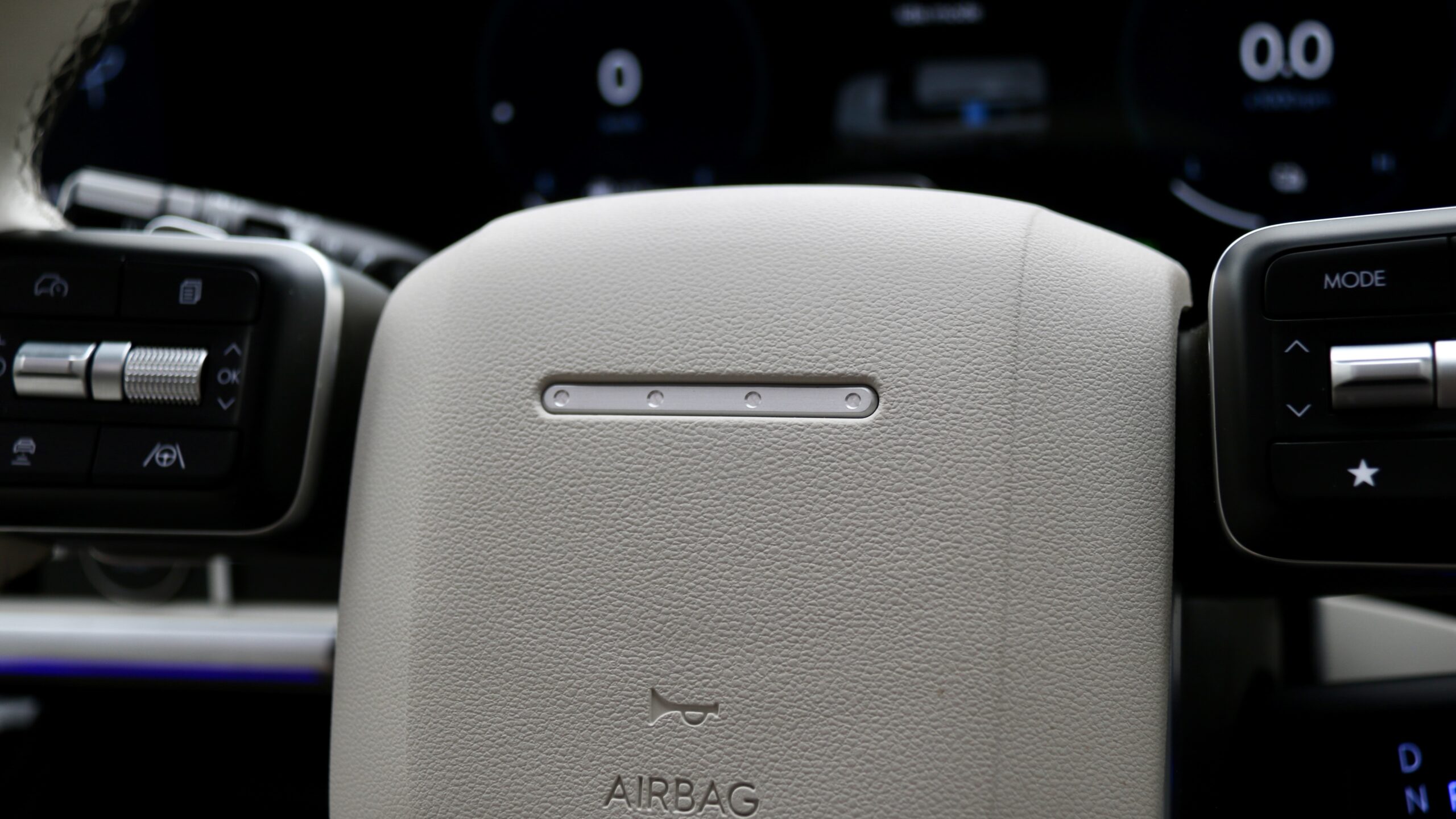
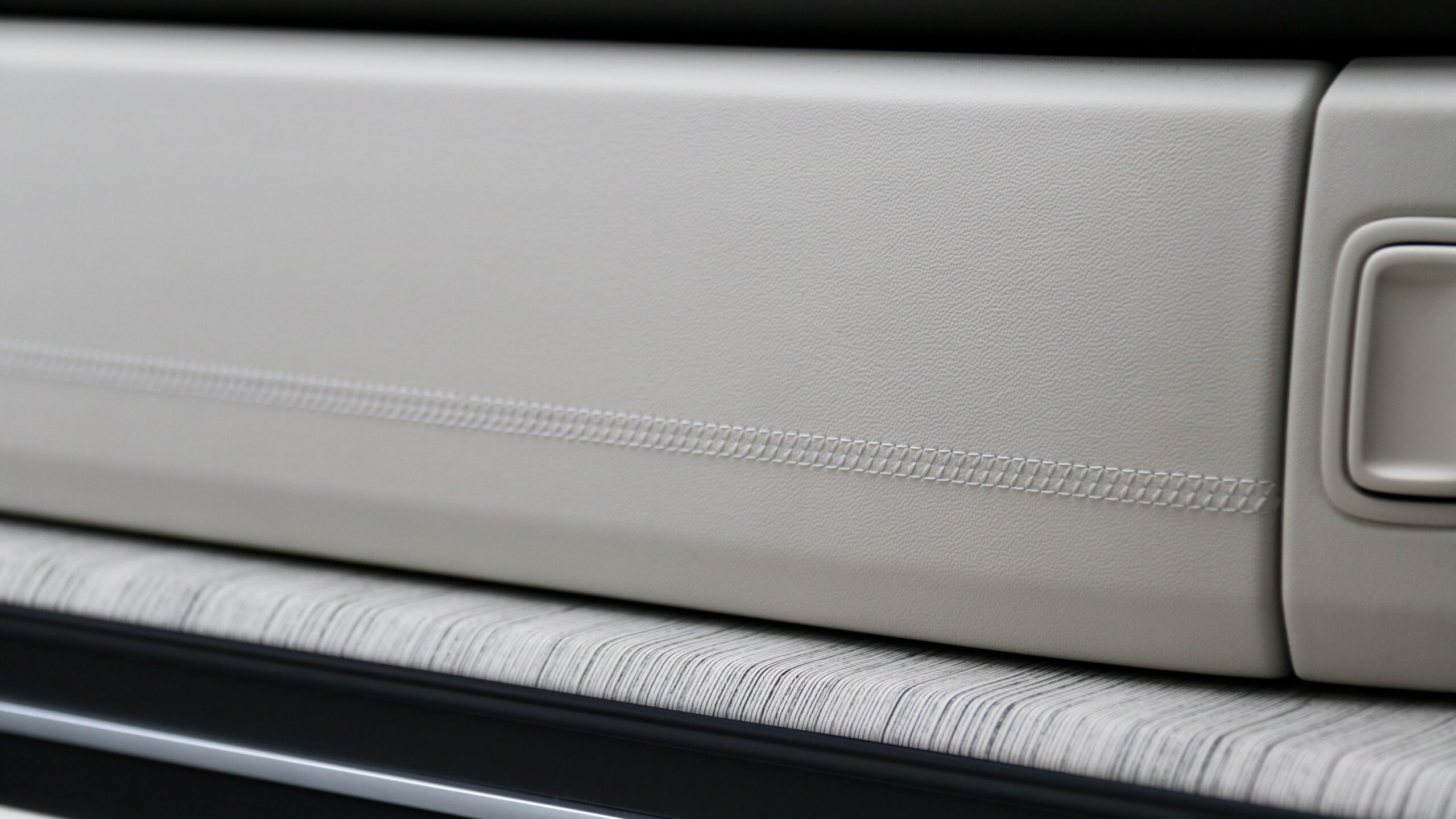
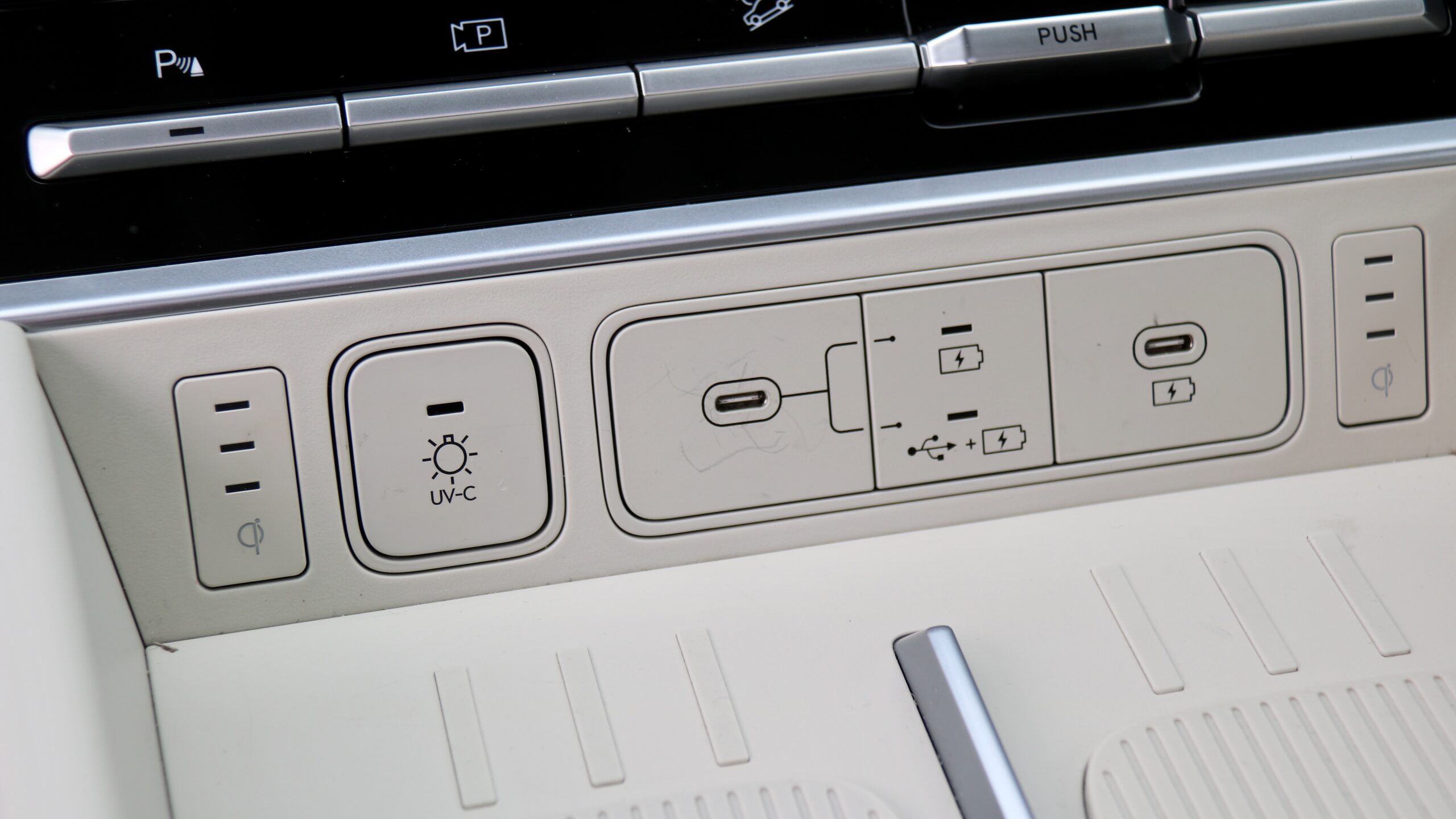
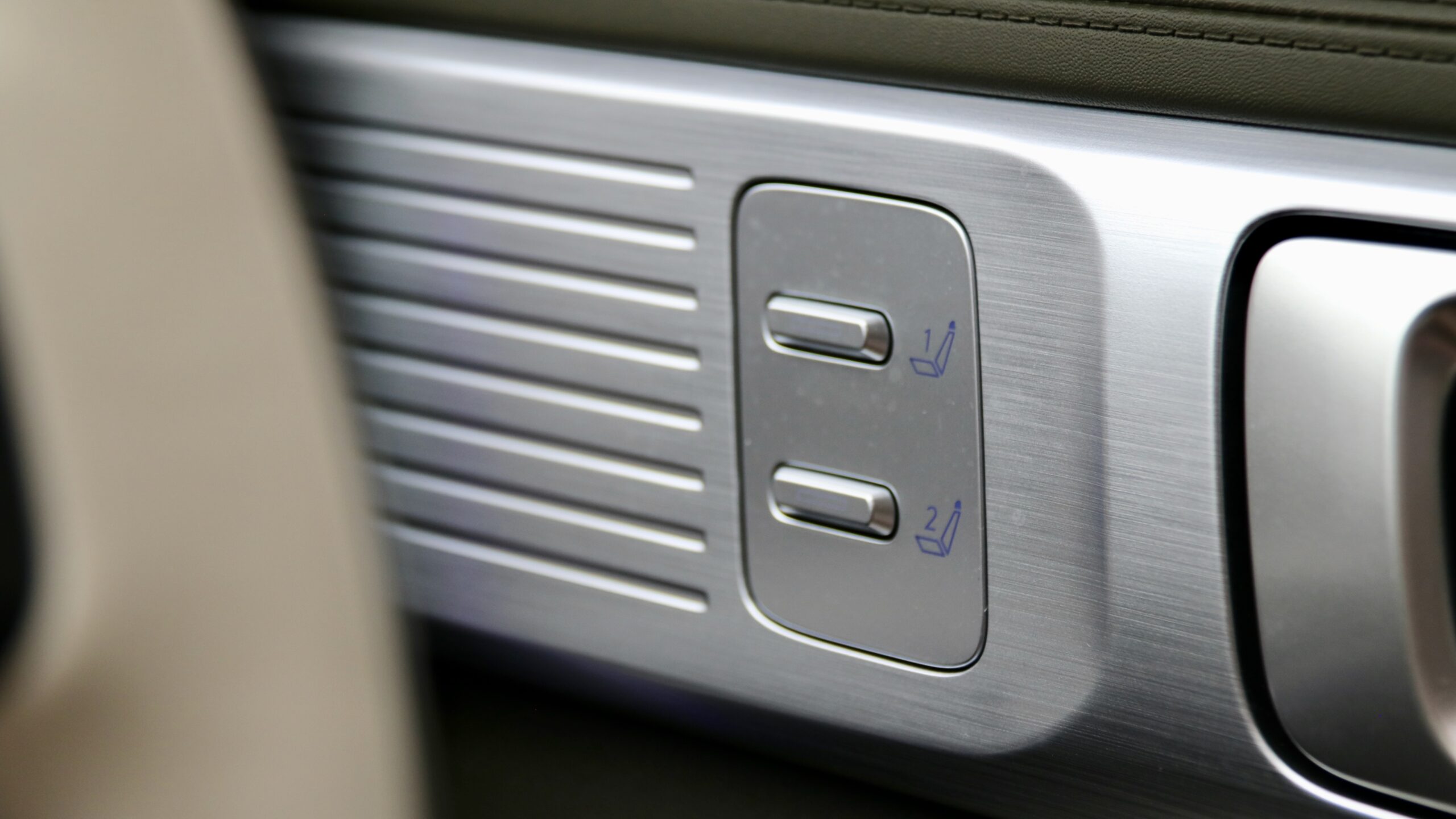
Centre of the Santa Fe’s interior is a dual 12.3-inch screen layout that covers both the driver’s display and central touchscreen. While the screens could be brighter in their colours, actual screen quality on both sides is great and both systems are very easy to understand. The driver’s display isn’t configurable beyond three different speedometer styles if that’s what you’re after, however.
The central touchscreen is well featured with wireless smartphone mirroring, digital radio, passenger talk amplification of the driver’s voice for rear passengers, the company’s ‘Bluelink’ live services, satellite navigation with live traffic from the Elite up and even live weather reporting. It uses the same ‘ccNC’ software as other new Hyundai products, which we’re big fans of thanks to its user friendliness. Plus, the HVAC system uses its own touchscreen separate to the main touchscreen, and is also quick to use. Audiophiles will like the punchy 12-speaker Bose sound system in the Elite and Calligraphy too, which is superior to the 11-speaker JBL sound system in the Kluger Grande.
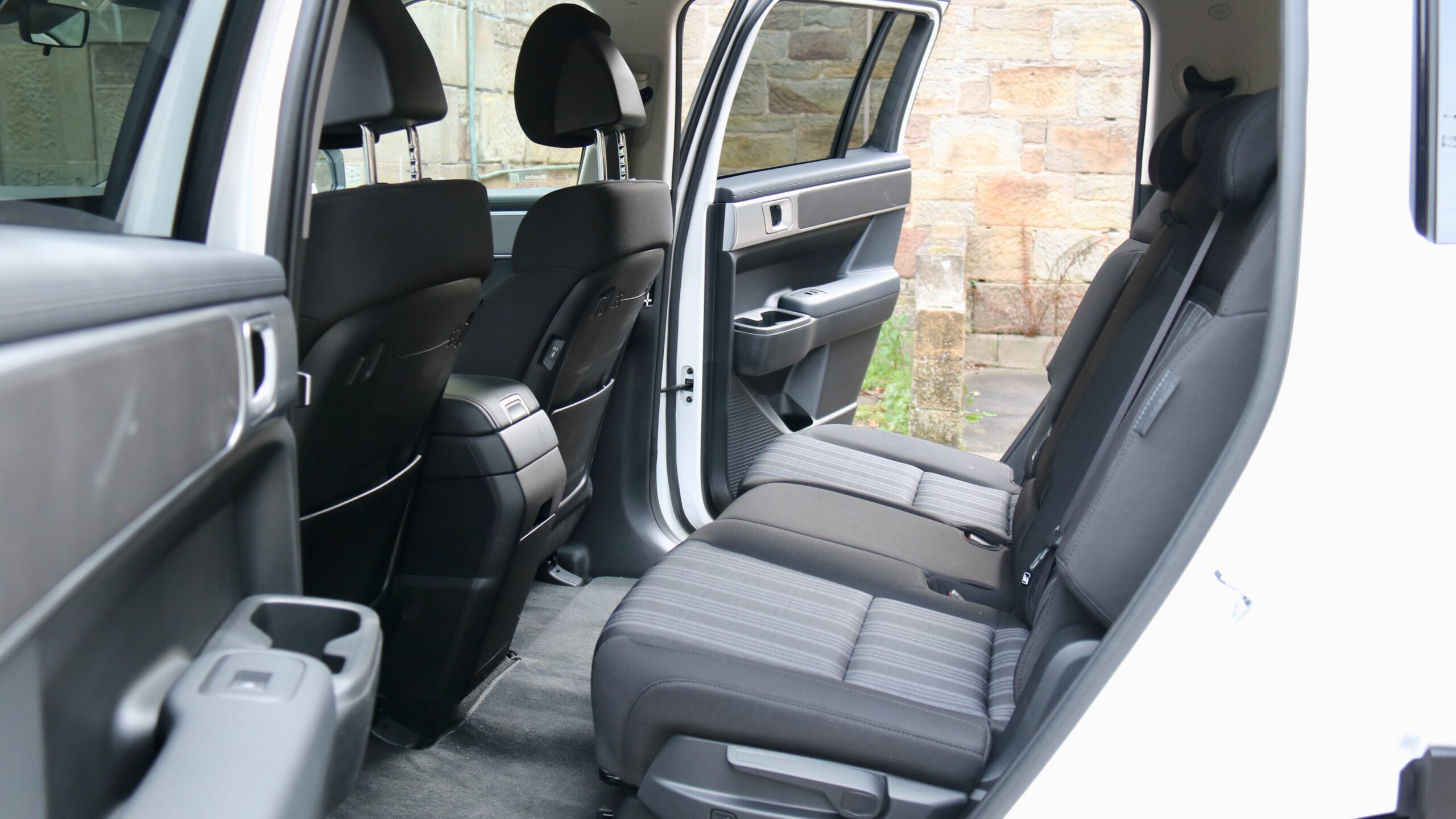
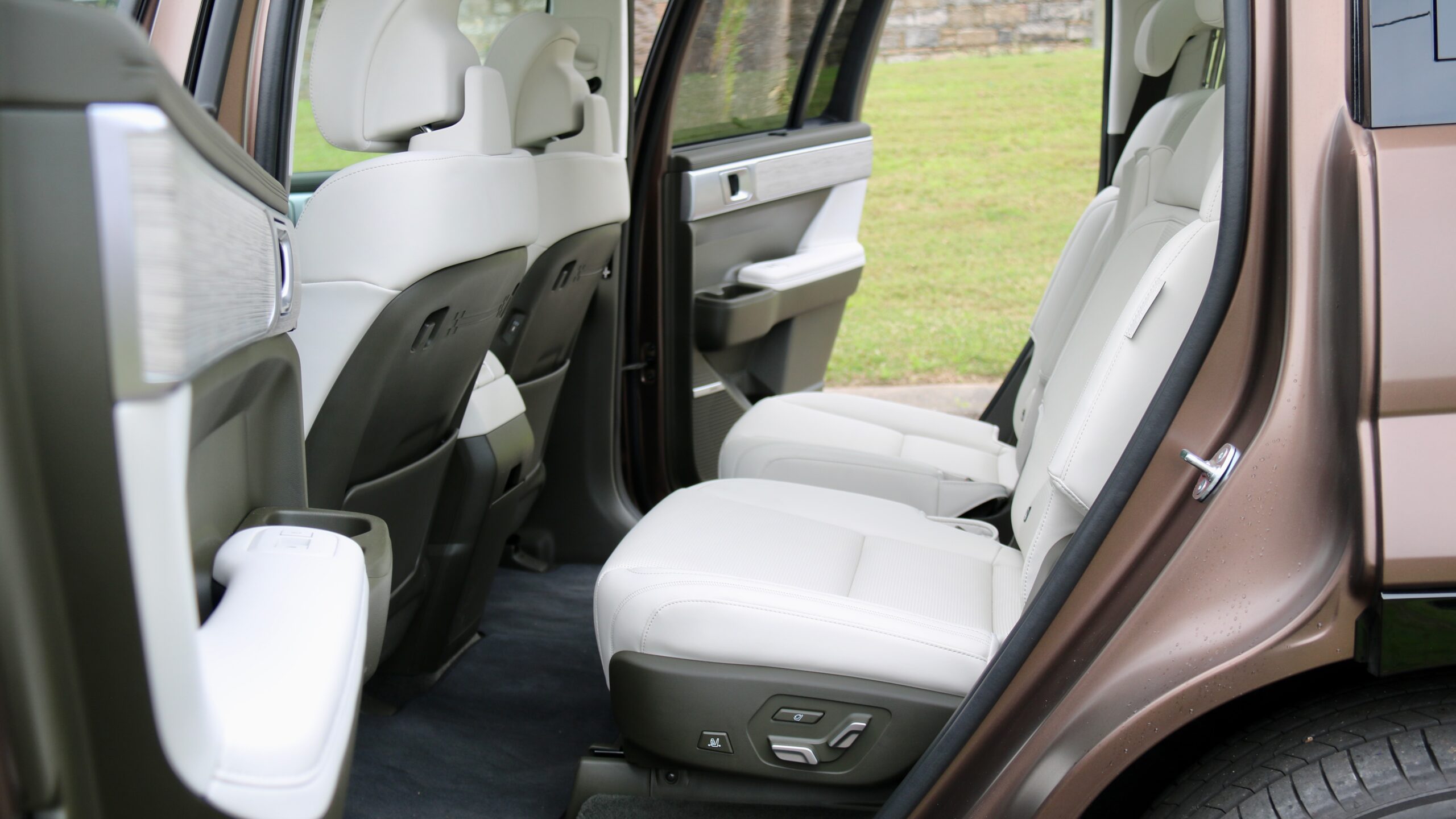
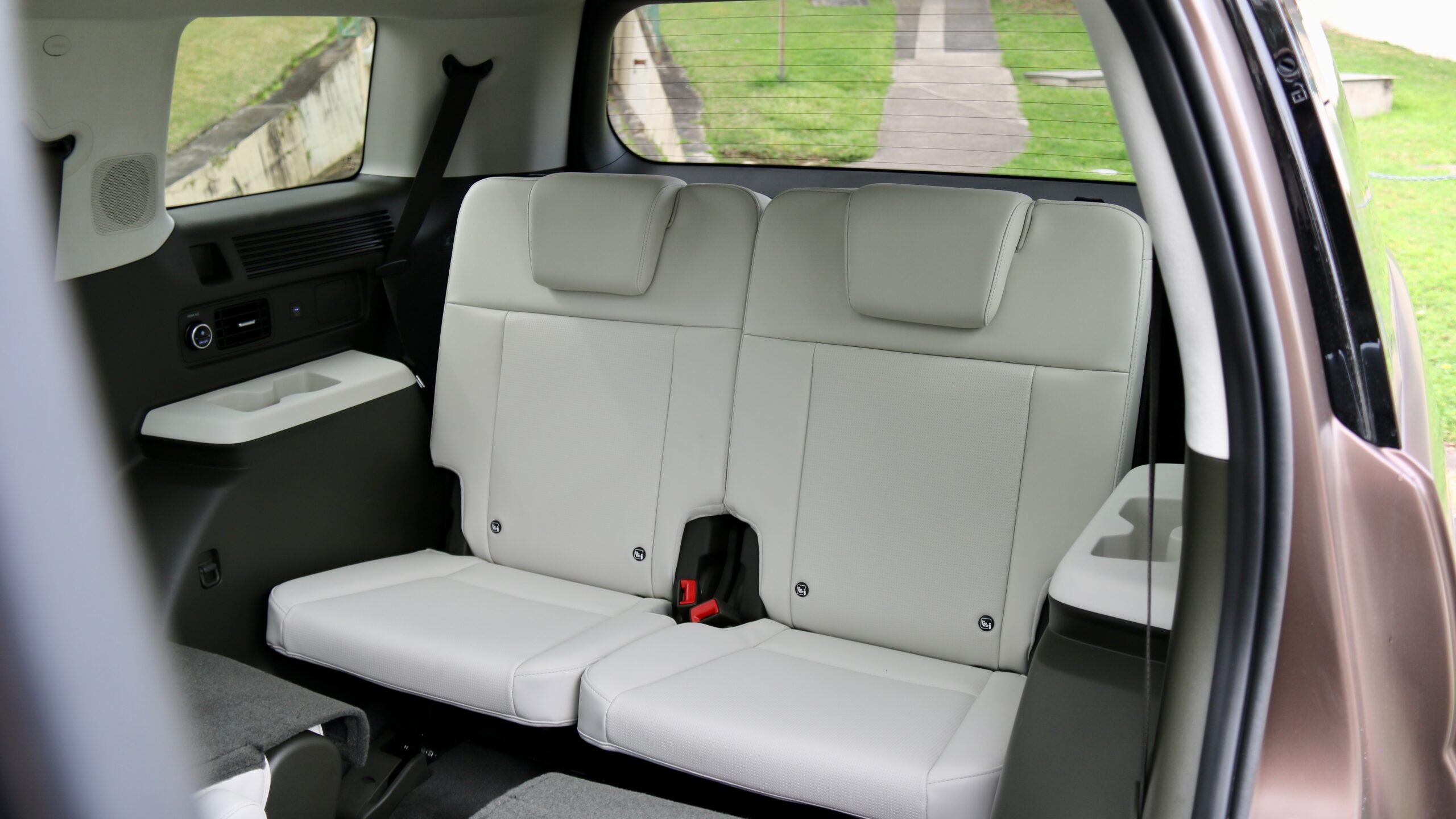
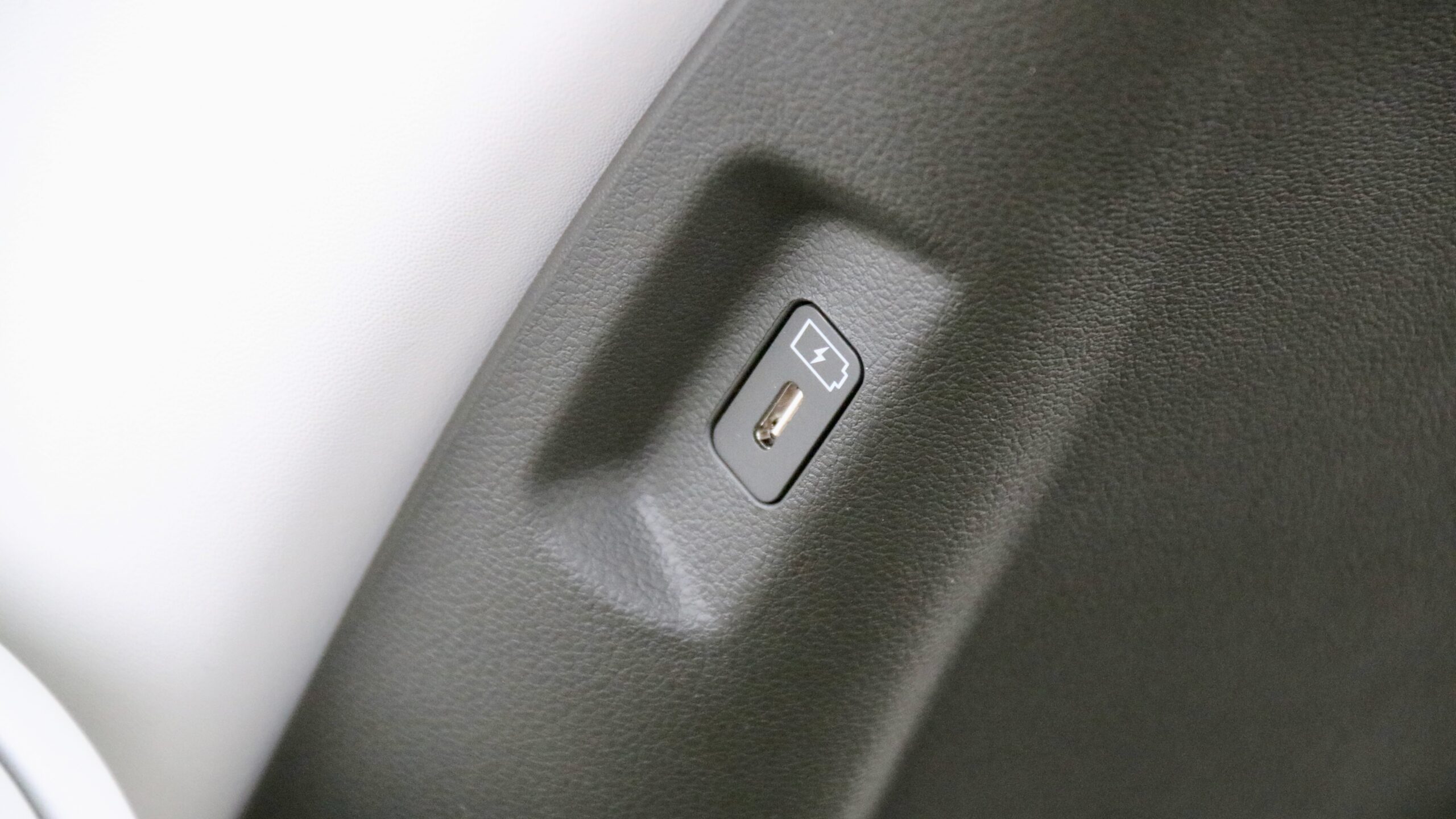
Moving rearward is a similarly positive story for the Santa Fe as its extra length and height – 45mm more overall to 4,830mm and 15mm more height to 1,770mm – and boxier shape has made both the second and third rows of seating larger and more comfortable than the previous model.
The second row is also quite well featured – all models get air vents, USB-C charging ports, big door bins, map pockets, bottle holders in the doors, a central armrest with cup holders and a large sliding tray in the centre console – and if you choose the six-seat Calligraphy (pictured), the captain’s chairs add electric operation and are very comfortable. Two ISOFIX points and three (seven-seaters)/two (Calligraphy six-seat) top tether points take care of child seats, while the doors open nice and wide for easy access.
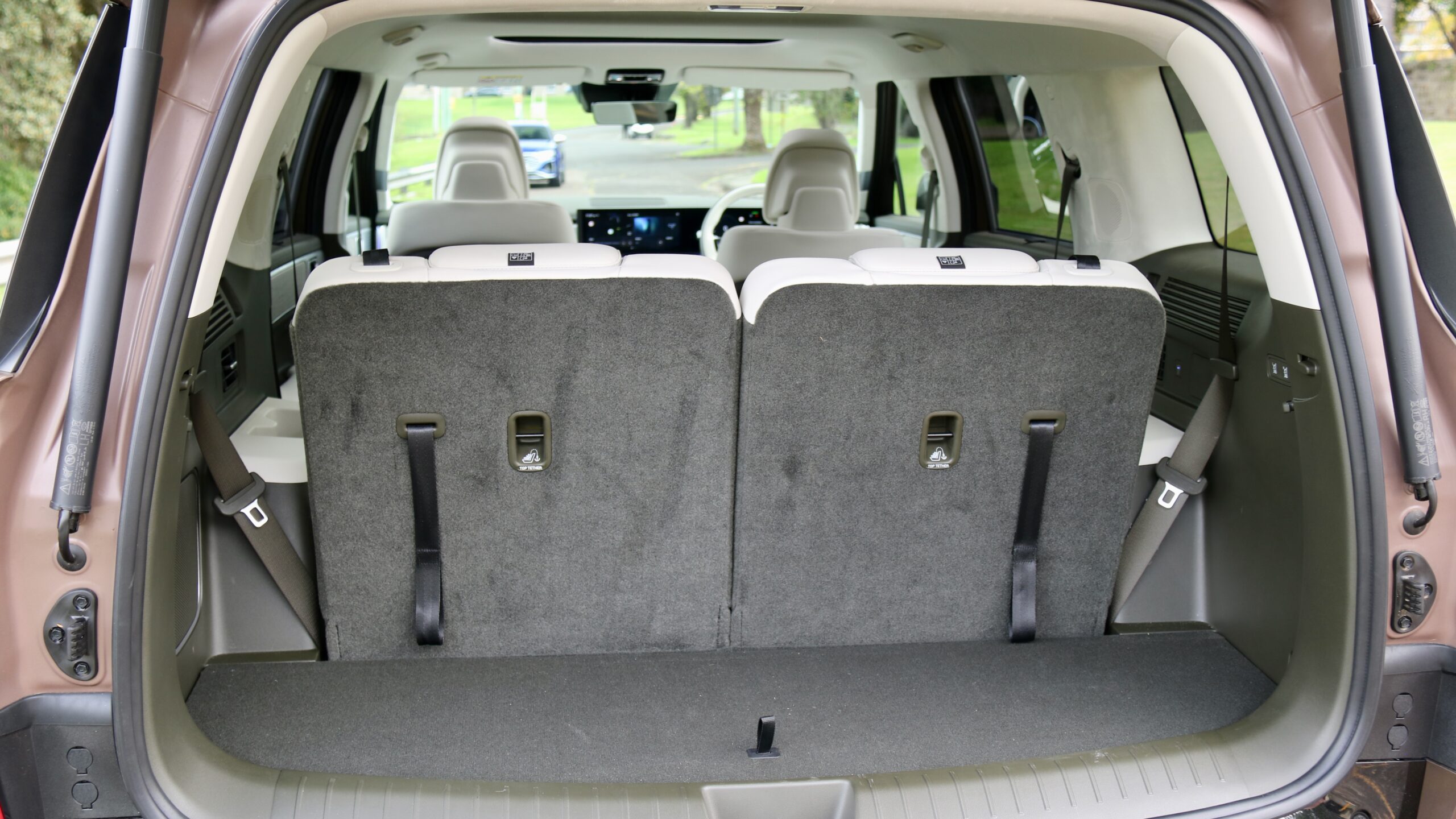

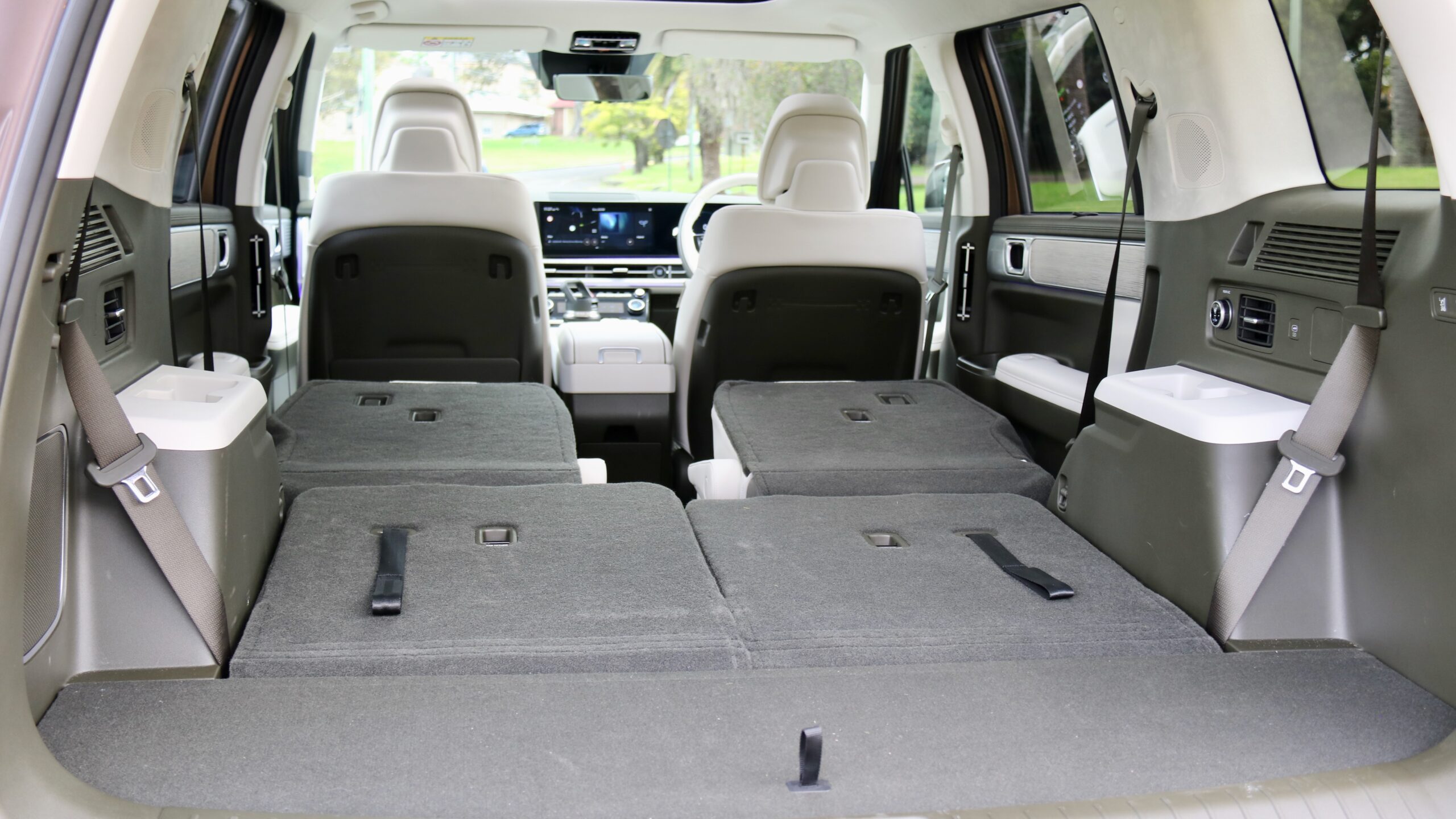
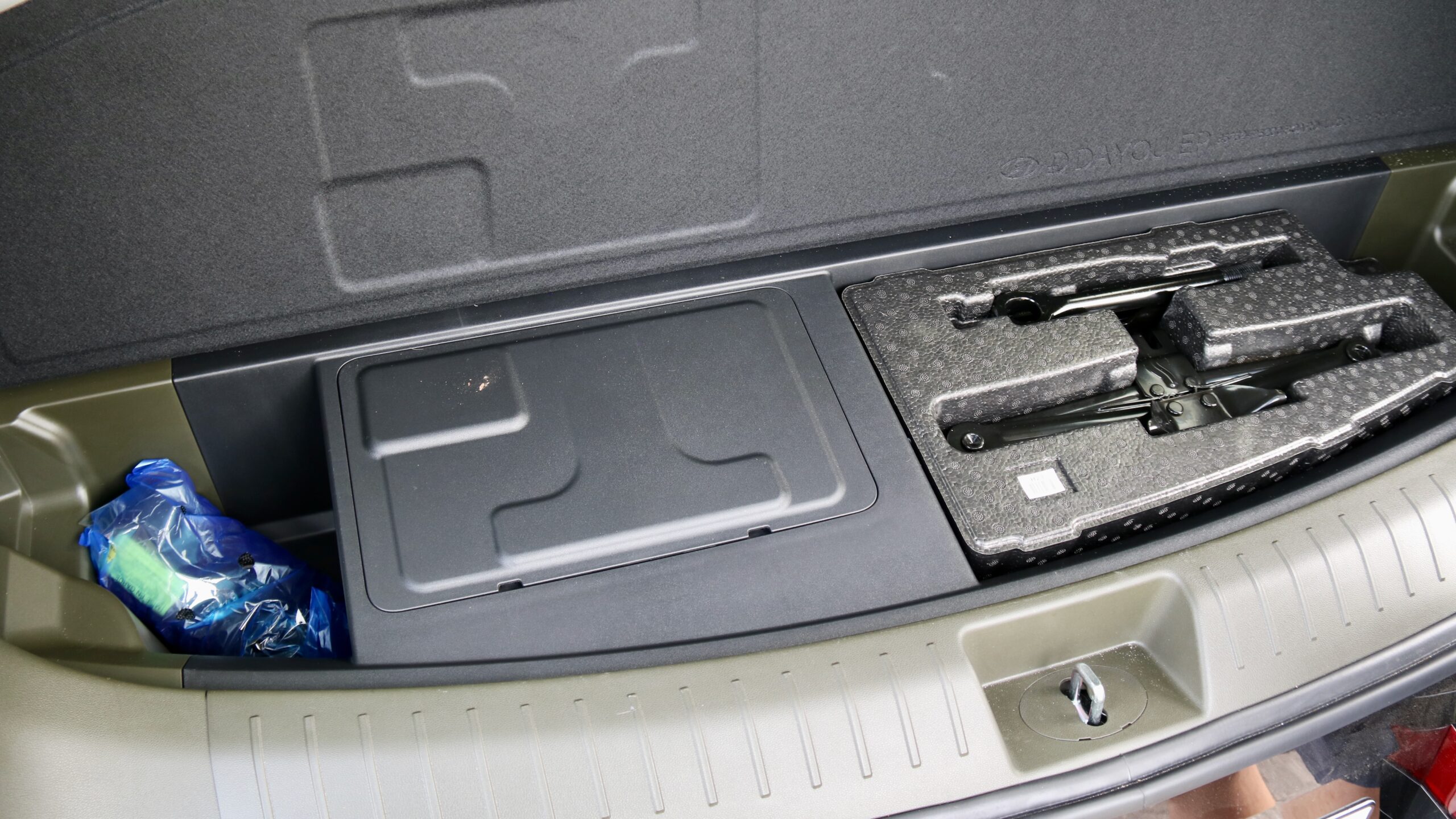
The third row of the Santa Fe has been the biggest beneficiary of the new model’s boxier dimensions and extra length because it’s now possible to fit two average-sized adults back there for reasonable amounts of time. The big windows also make it feel roomier than a Kluger. What’s an even bigger improvement is that the curtain airbags finally cover the third row – which they still don’t in the Santa Fe’s Kia Sorento cousin. All models also get a fan speed controller, air vents, cup holders and USB-C ports, as well as two top-tether points. Access to the third row is also easy as both portions of the 60/40-split middle seat tilt and slide far forward – it’s still not as good as the Jeep Grand Cherokee, but still good.
The boot of the Santa Fe measures 628-litres with the third row folded – Hyundai doesn’t quote a figure with all rows up, but there’s enough space behind the third row for a few bags, though the cargo cover doesn’t store underneath the boot floor – and a substantial 1,949L with all the rear seats folded. Impressively, all models include buttons to fold the middle row – though in the six-seat Calligraphy, they also raise them – and underneath the car is a full-size alloy spare wheel, which is great.
What warranty covers the 2024 Hyundai Santa Fe?
Like other new Hyundai products, the 2024 Hyundai Santa Fe is covered by a five-year/unlimited km warranty with 12 months of roadside assistance that’s increased a further 12 months each time it’s serviced at a Hyundai dealership. The hybrid battery is covered by an eight-year/160,000km warranty and the Santa Fe needs servicing once-yearly/every 10,000km (whichever comes first). The Santa Fe costs $2,405 to service over five years/50,000km or $481 per service.
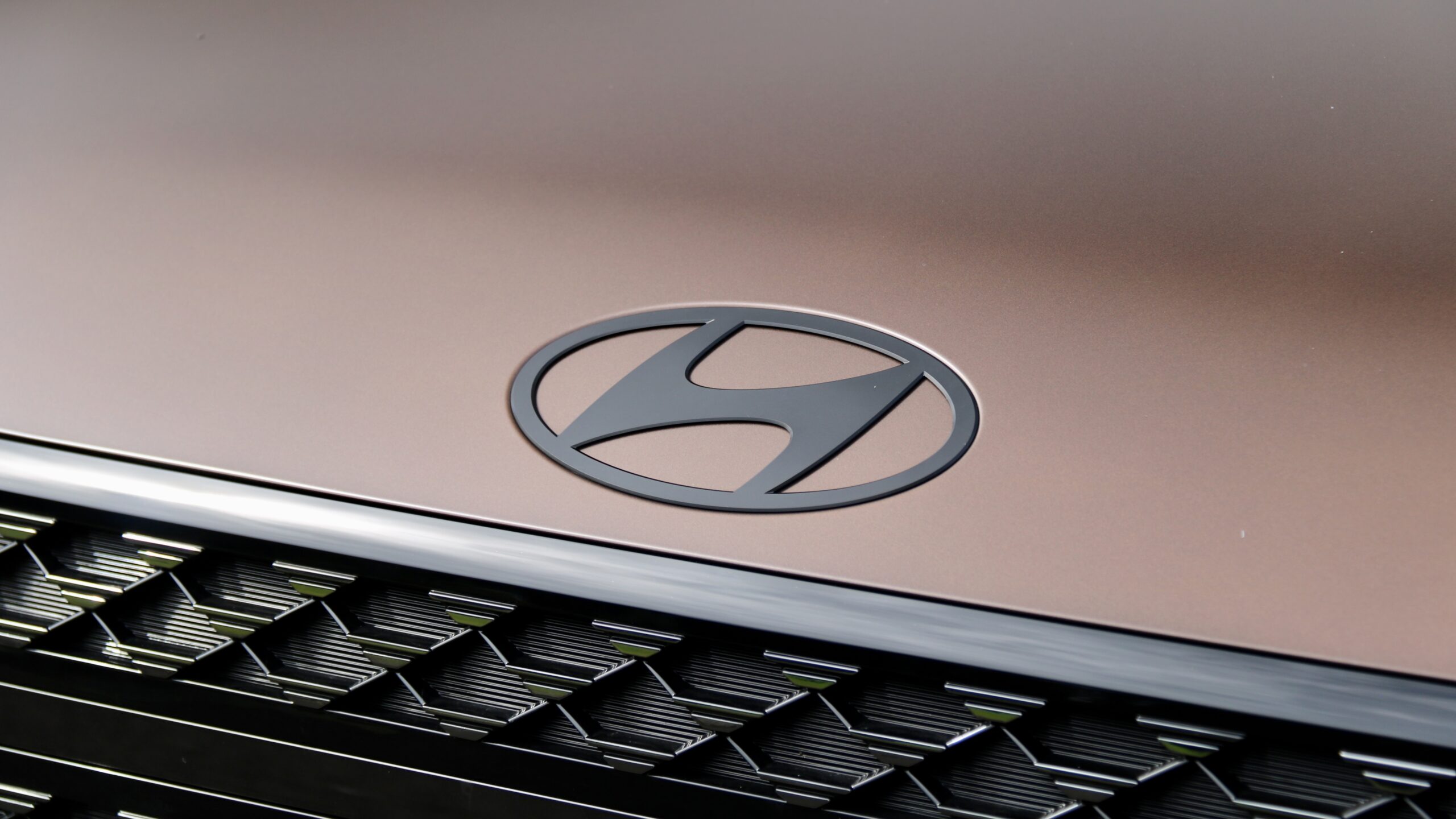
Toyota also covers the Kluger with a five-year warranty, which is extended to seven years for the drivetrain if servicing has been carried out as per logbook requirements – though no roadside assistance at all. The Kluger’s hybrid battery warranty is extended to 10 years if a hybrid battery health test has been performed as part of the logbook schedule. Five years/75,000km of servicing the Kluger hybrid costs $1,325 ($265 per service), which is cheaper than the Hyundai and also more convenient thanks to its longer 15,000km service intervals. In that respect, there’s improvement for Hyundai to make.
Should I buy a 2024 Hyundai Santa Fe?
If you’re in the market for such a car, we definitely think that the 2024 Hyundai Santa Fe is worthy of consideration. While the styling may not be to all tastes, there’s no denying that it’s seriously good for its target market. It’s well equipped across the range – especially with safety equipment, which is obviously important for its target market – and drives well thanks to a well sorted ride and handling balance. The hybrid drivetrain is peppy and reasonably efficient for such a big car, and the interior is quite practical.
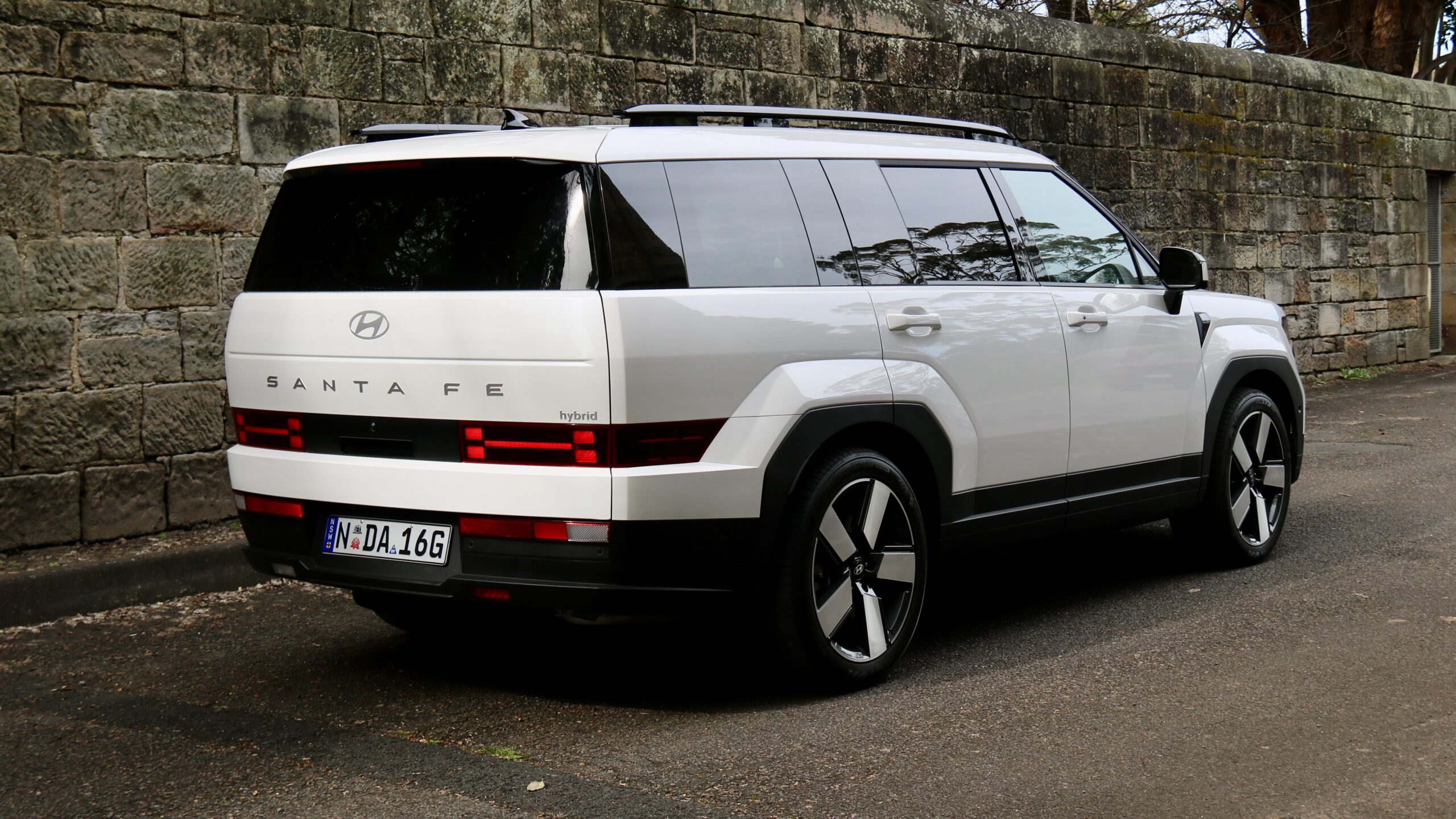
What’s not to like? Well, its pricing now starts a lot higher than it used to and while the hybrid drivetrain is good, the old model’s refined diesel powertrain is no longer available globally. Then we get to the exterior design, which is certainly divisive, though it’s better in person. But overall, Hyundai has succeeded in making a great large SUV and if you’re after one, it simply must be on your test drive list.

Leave a Reply